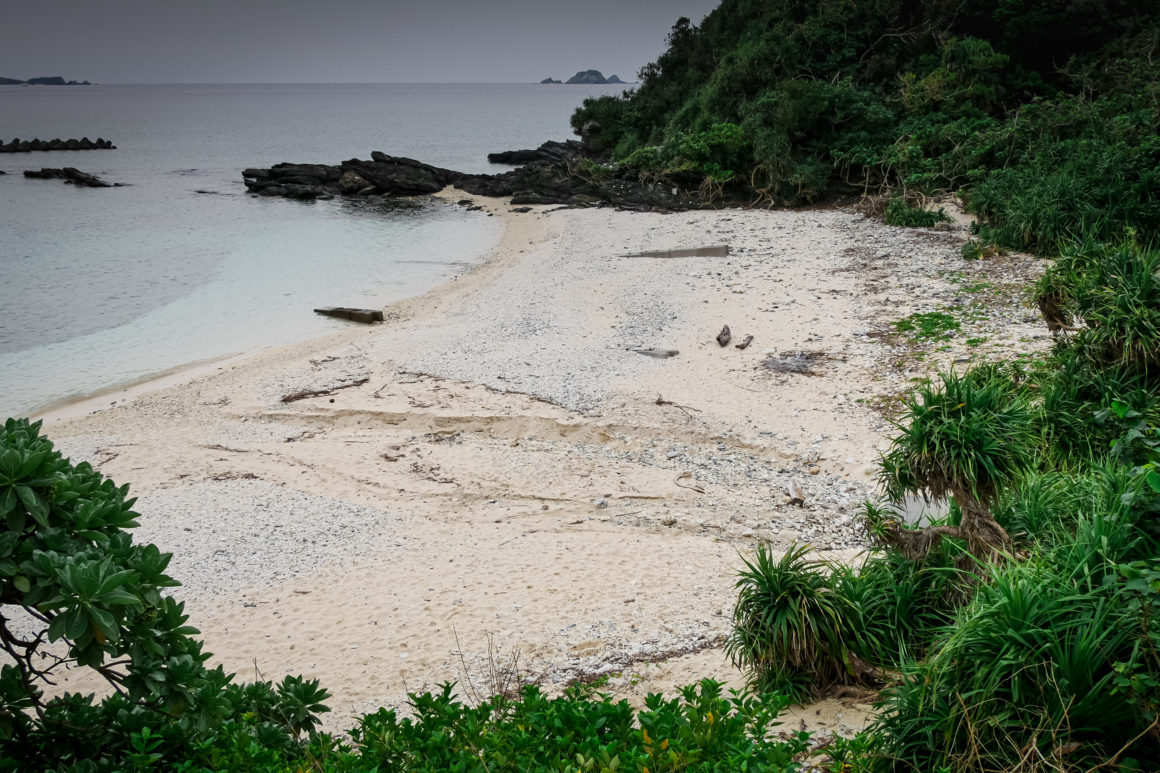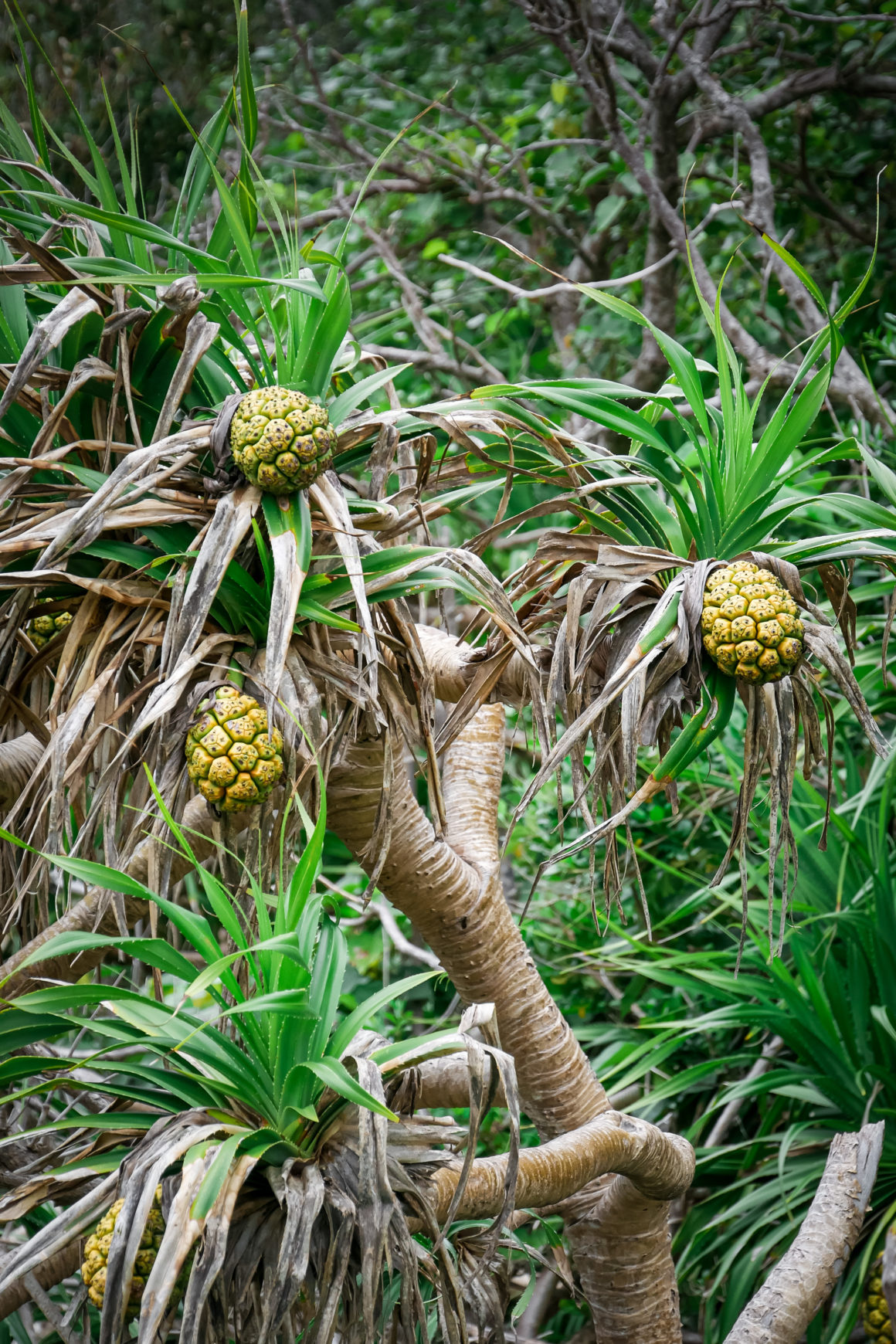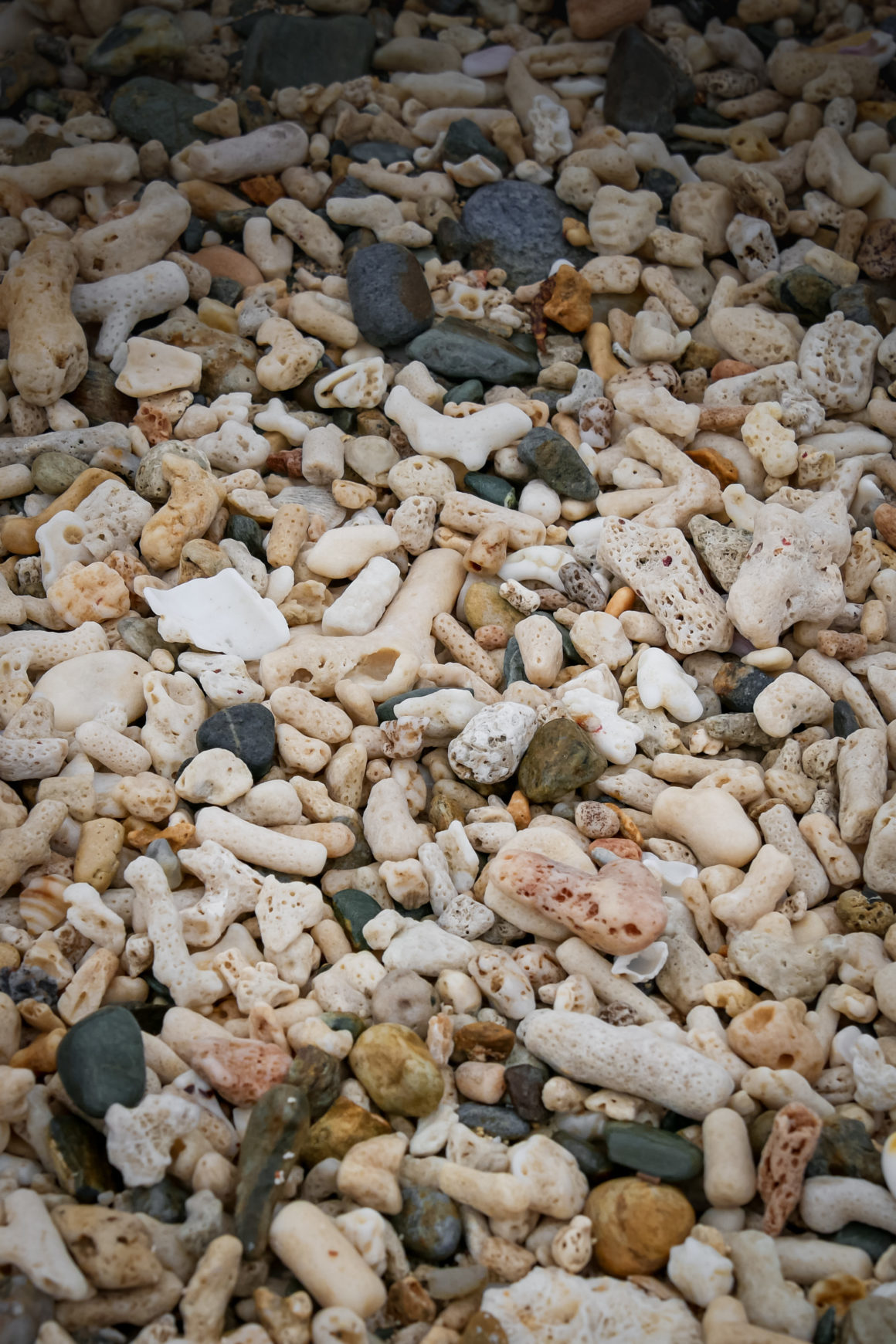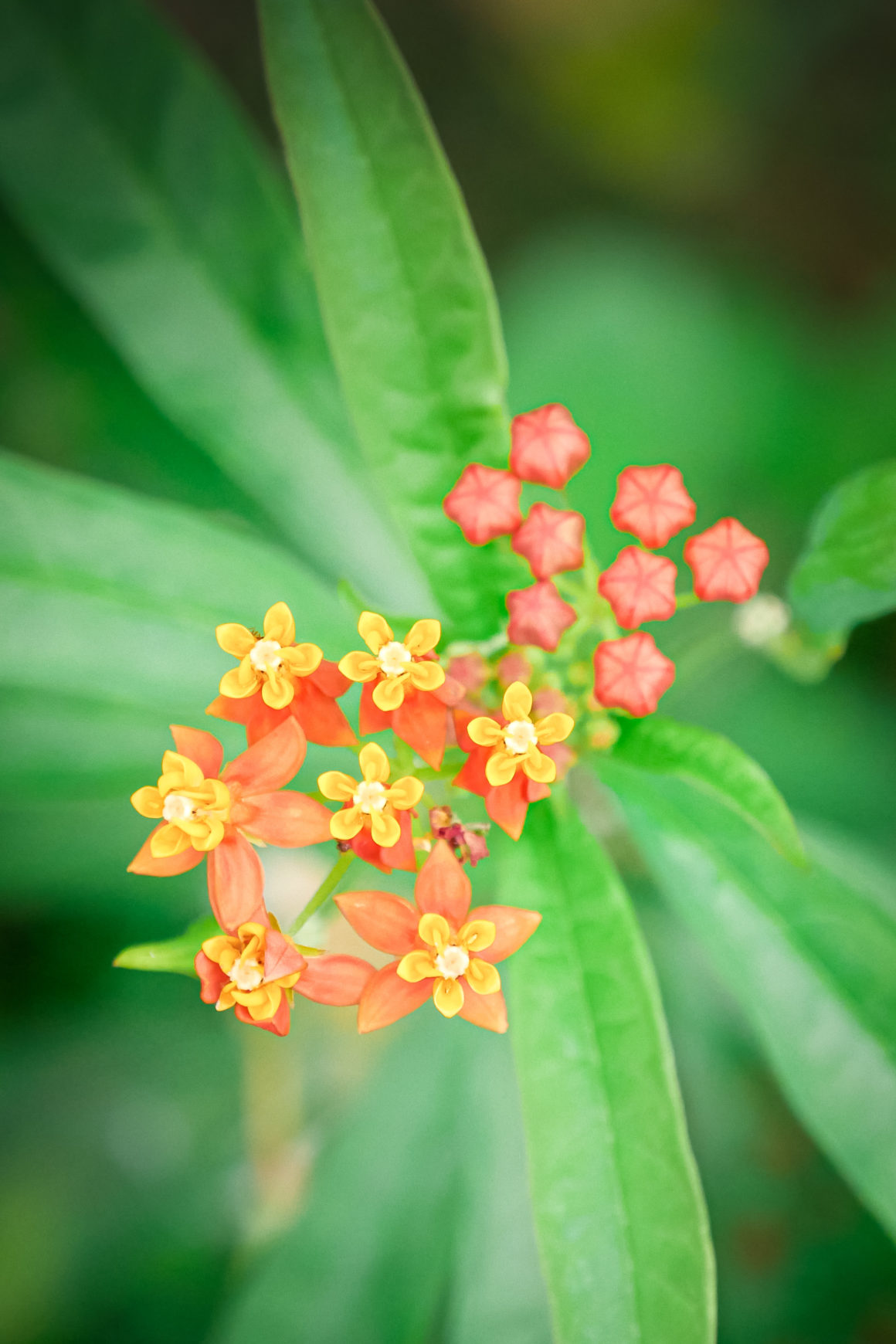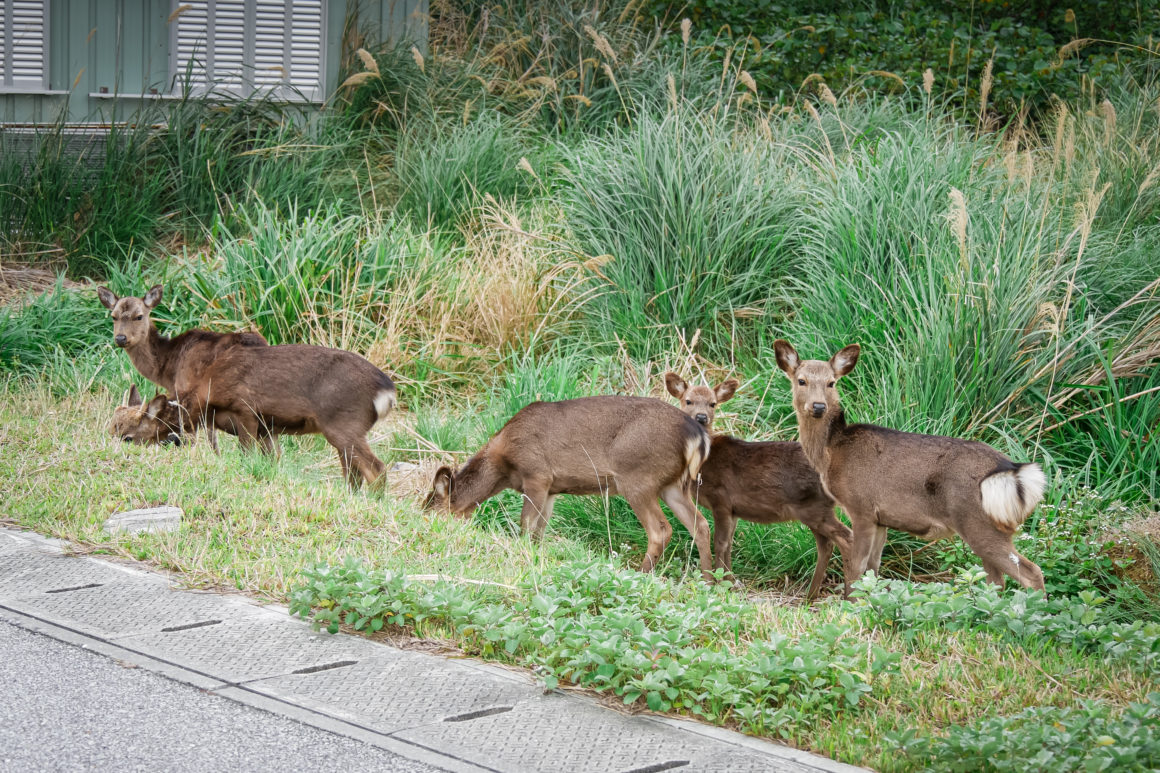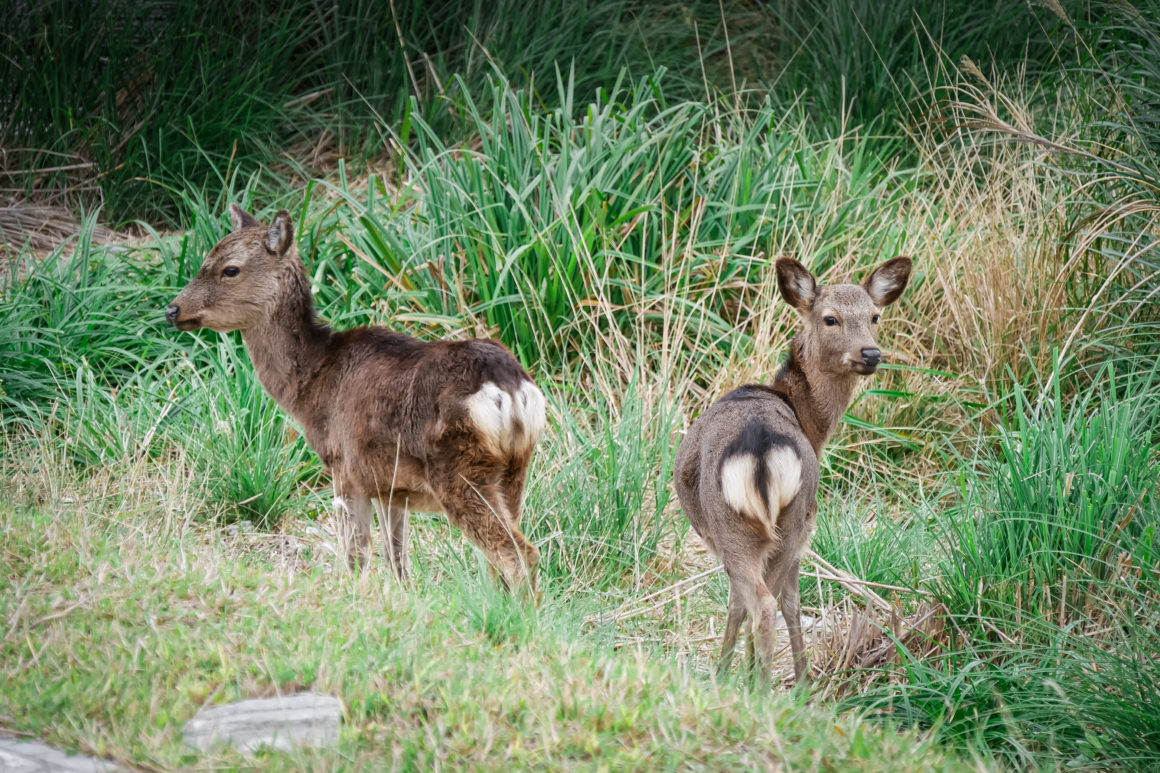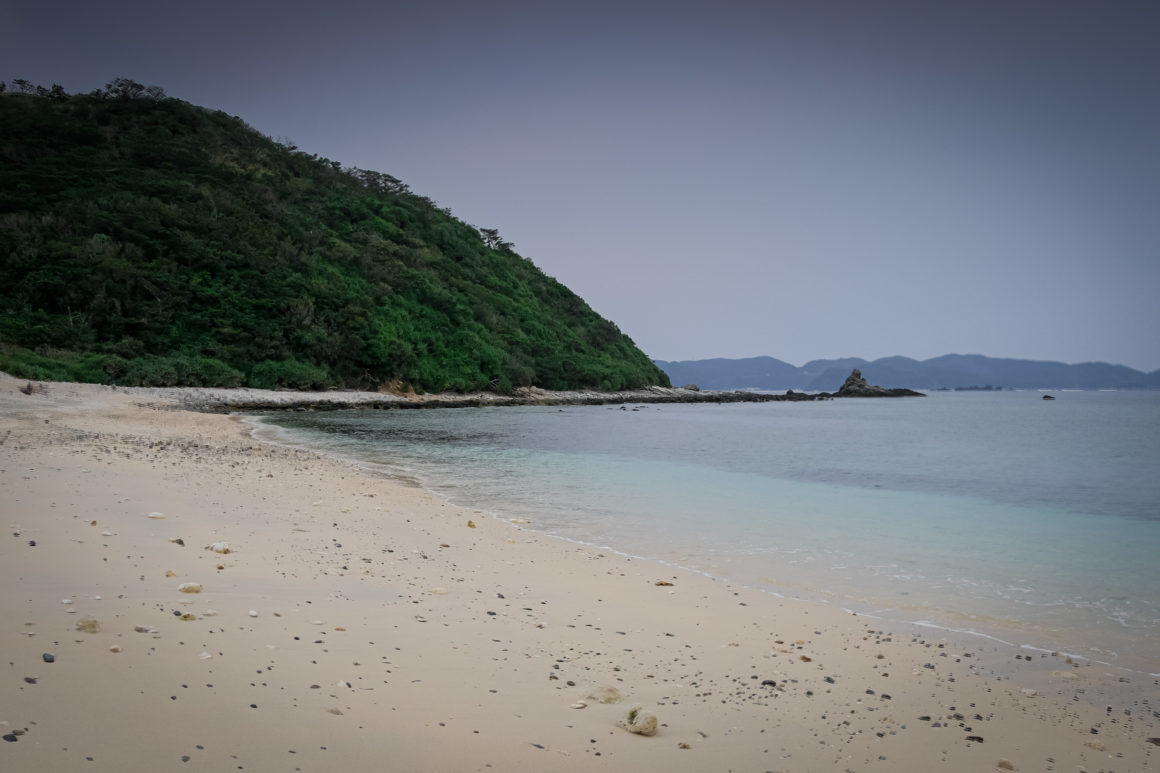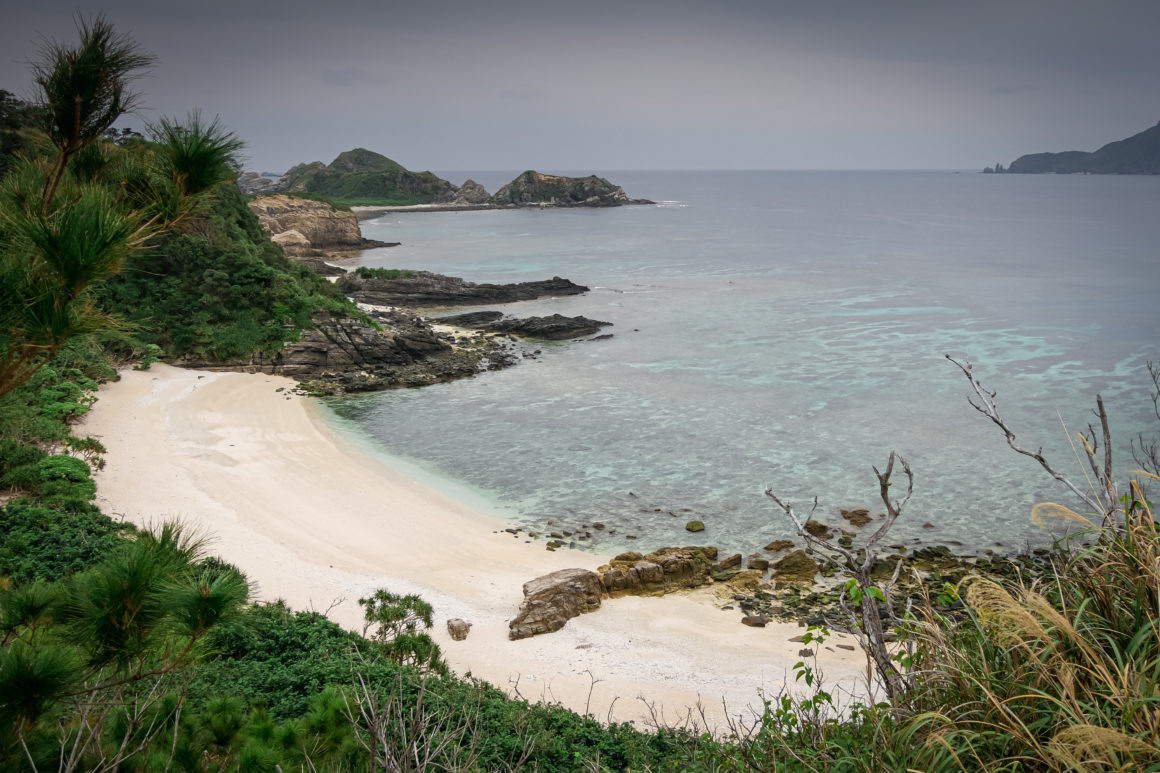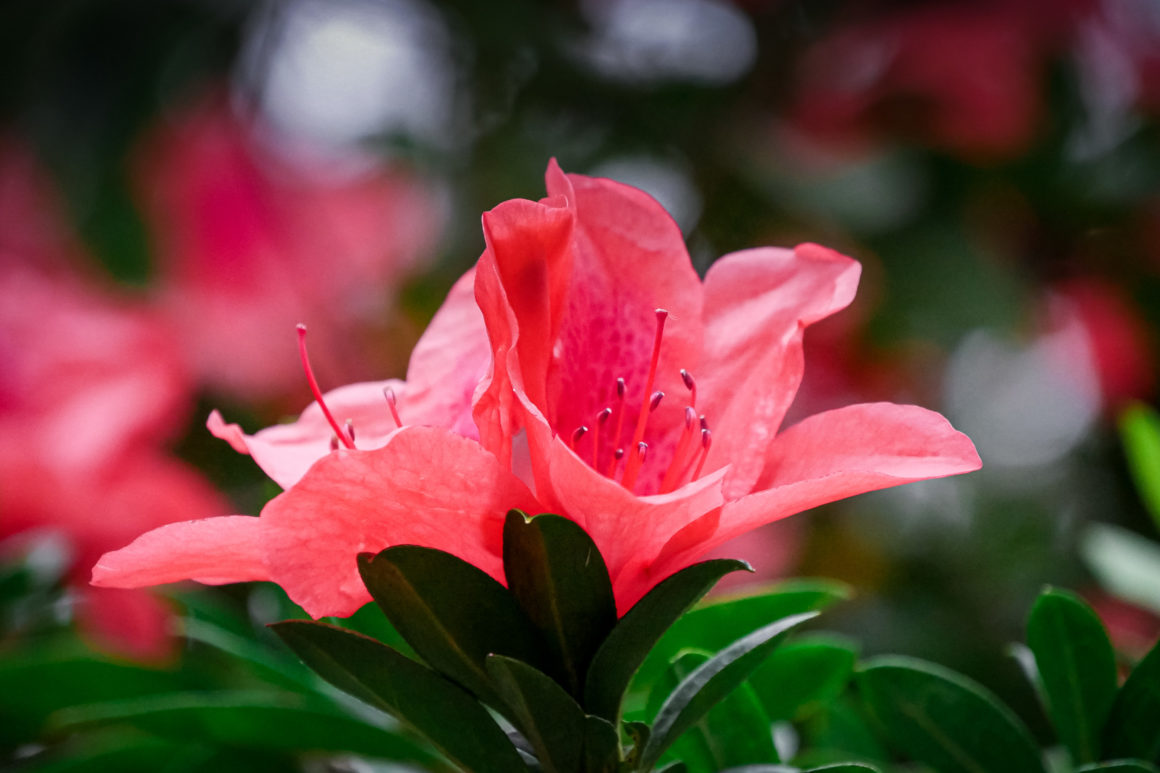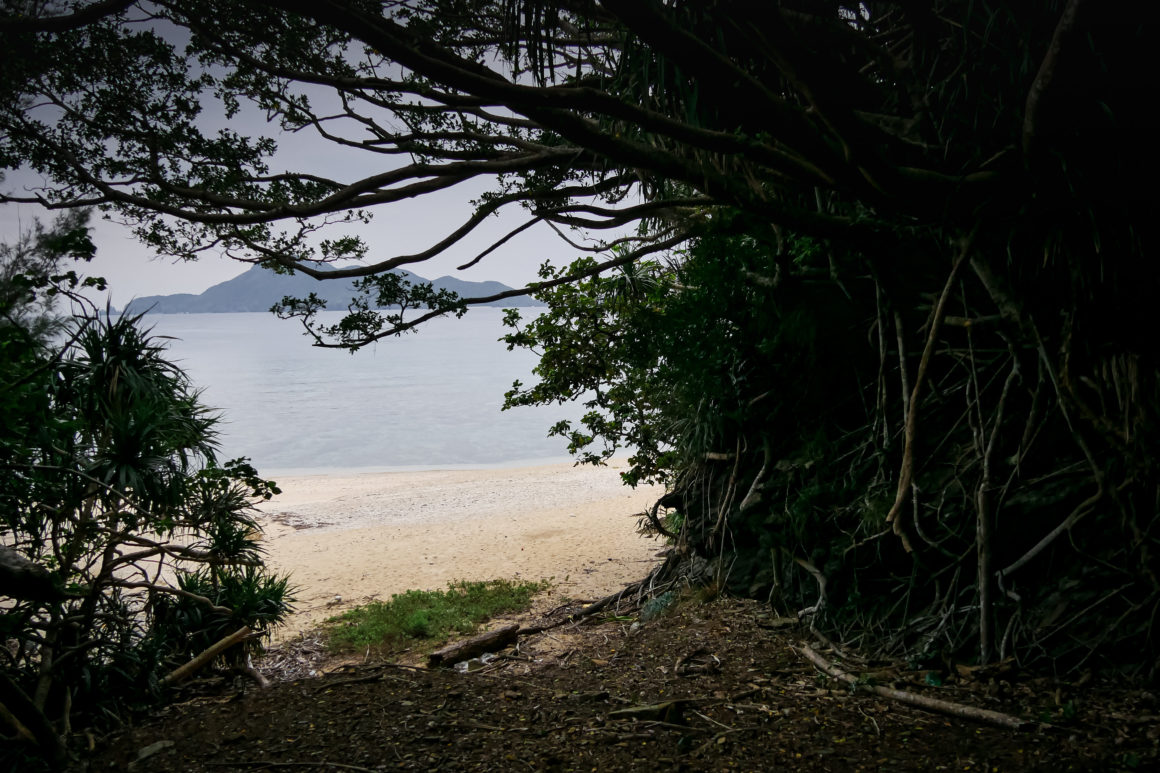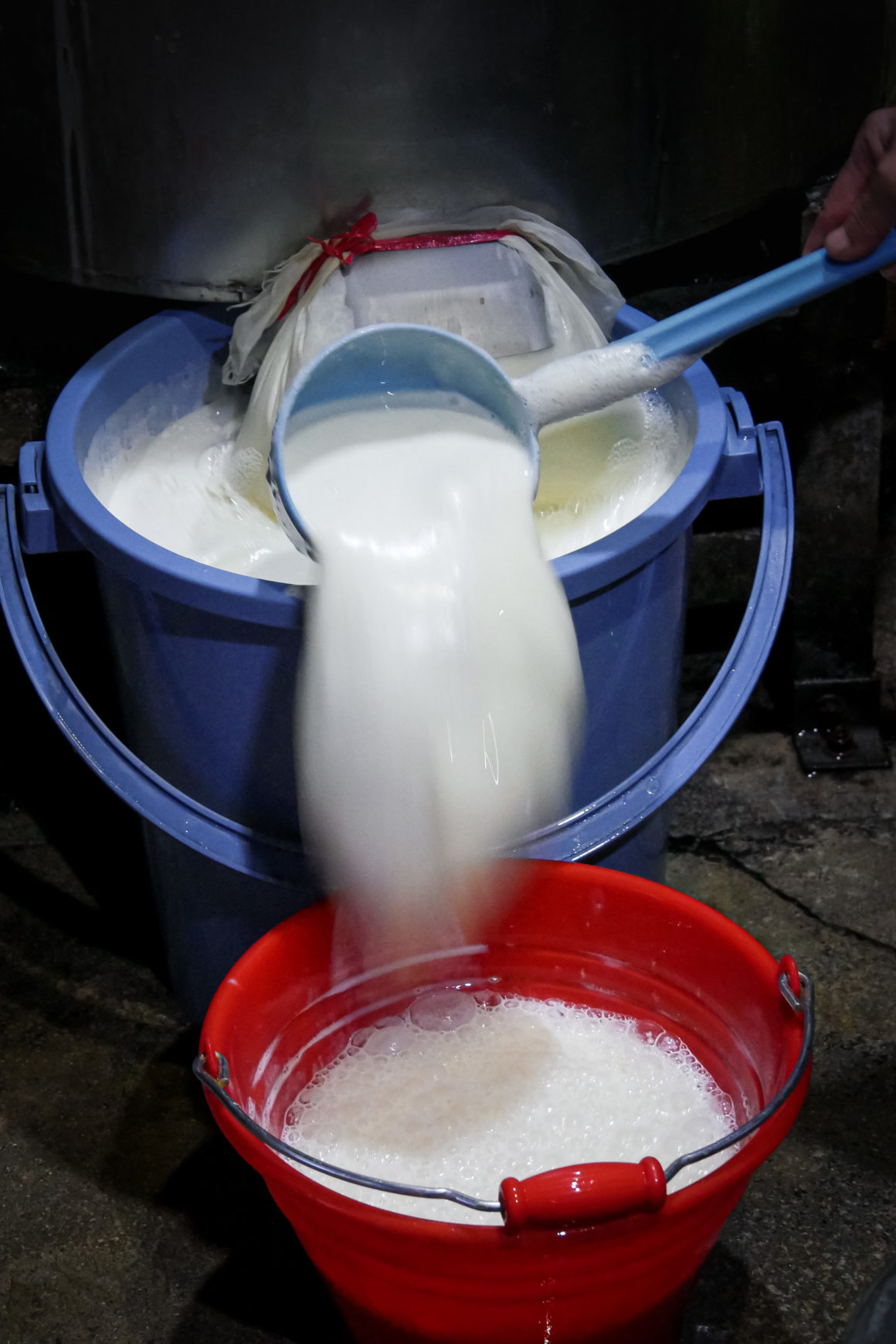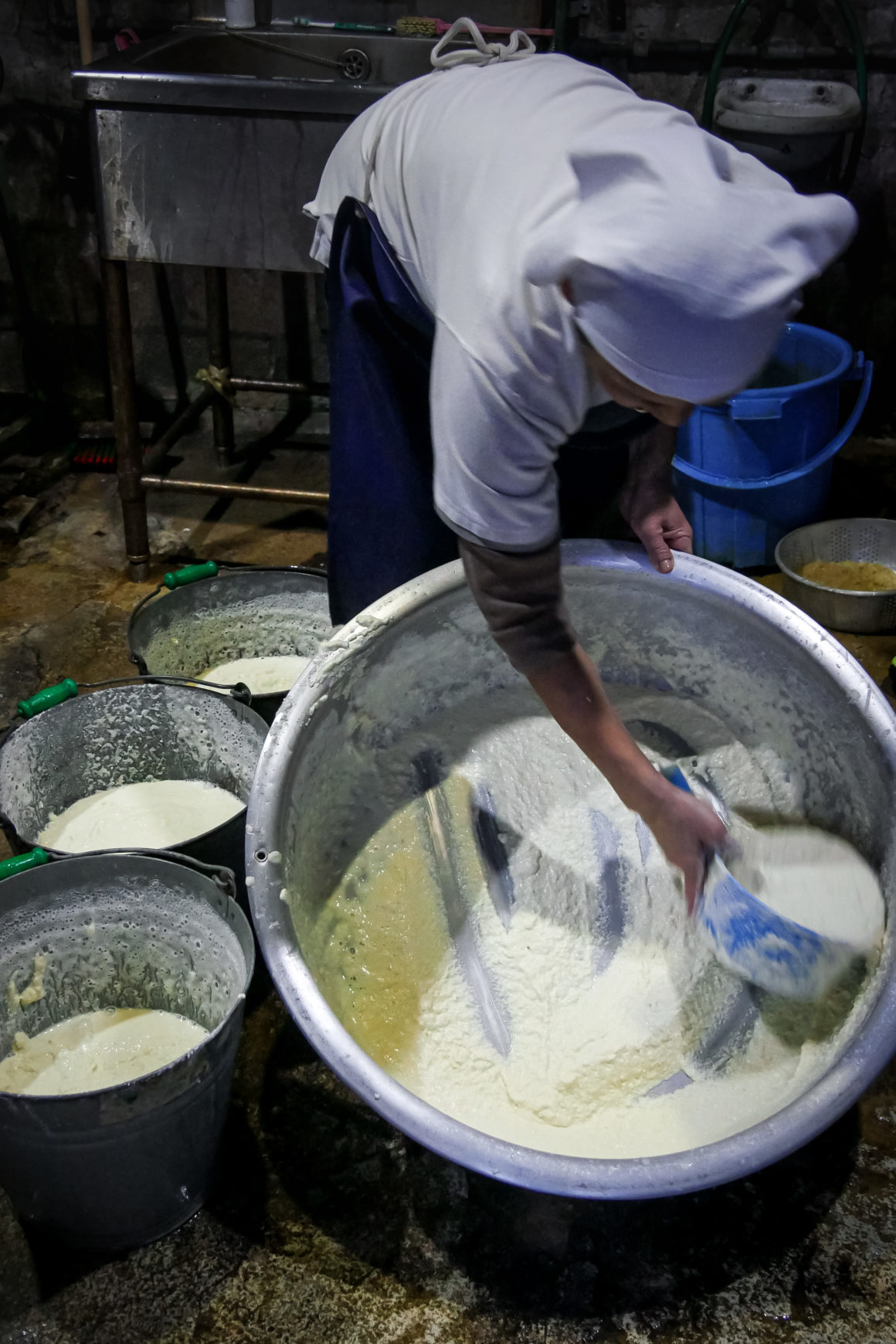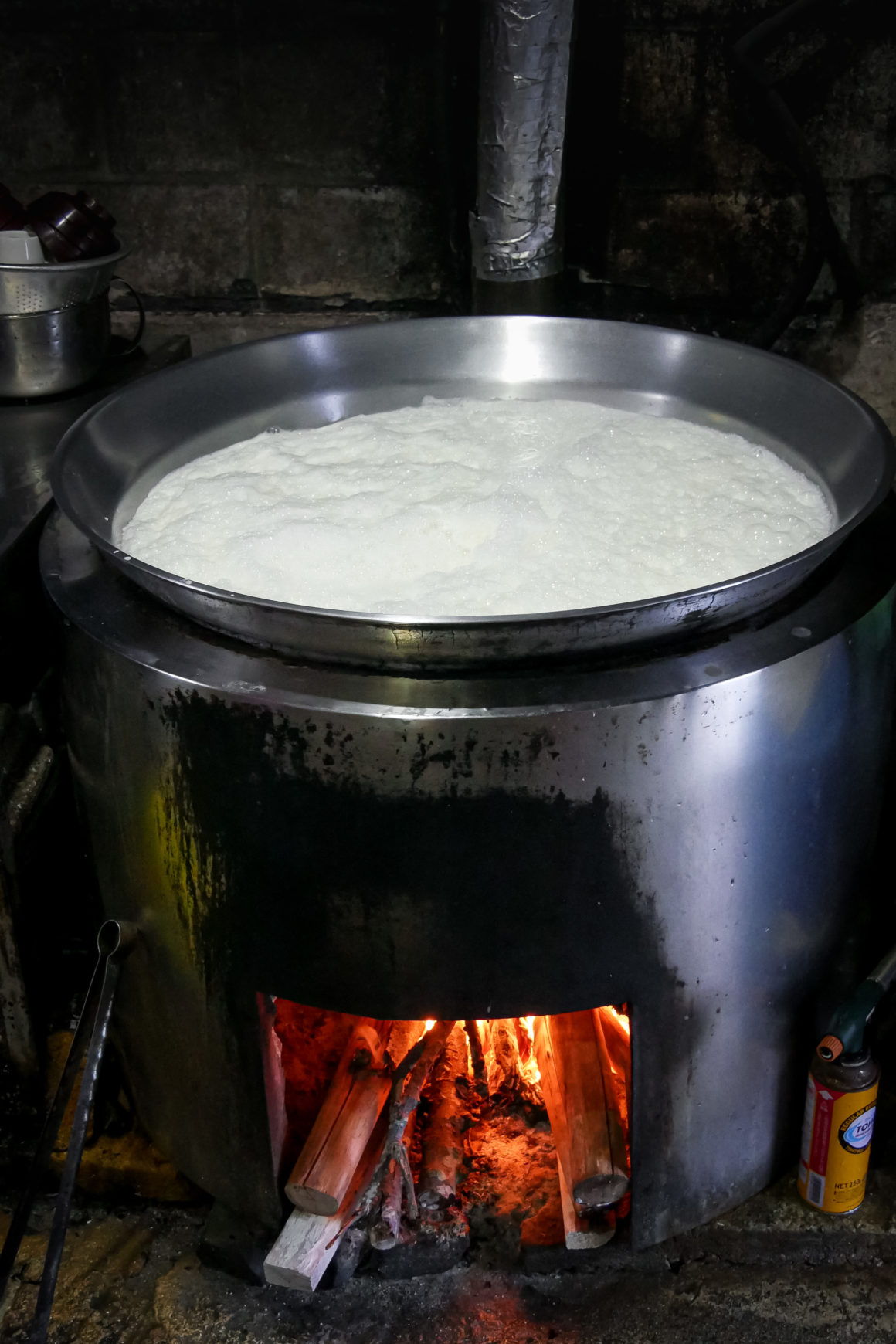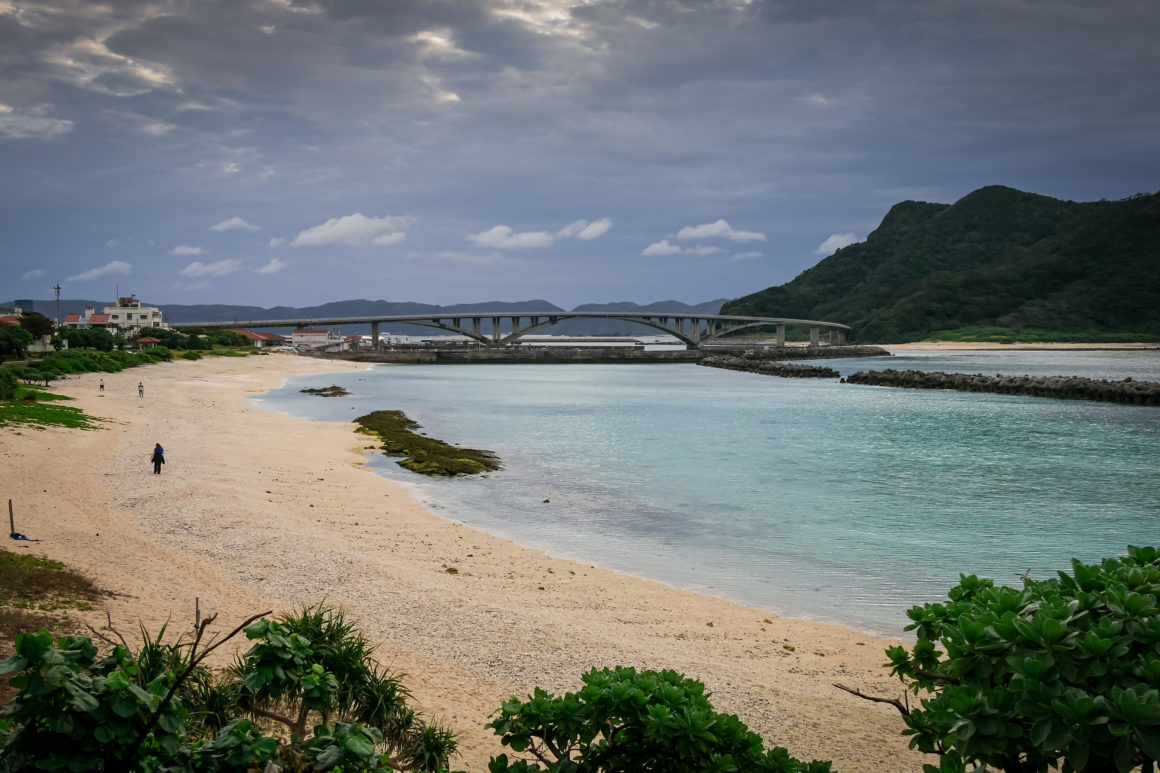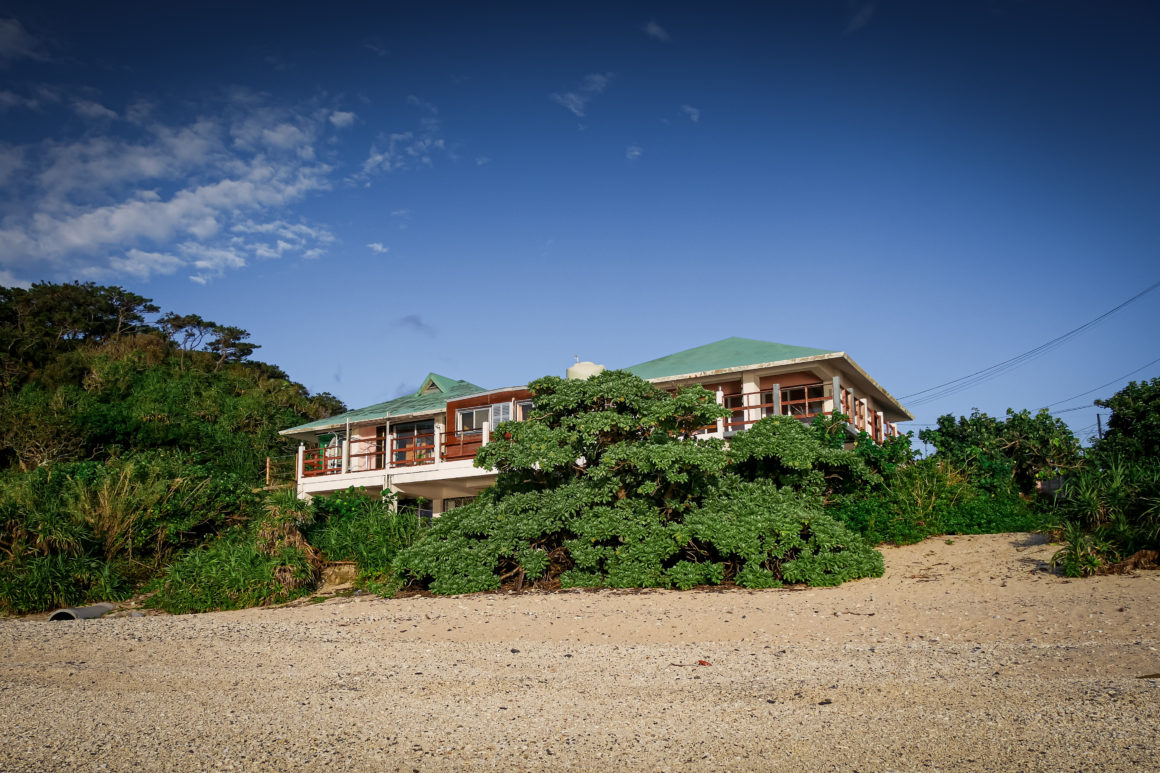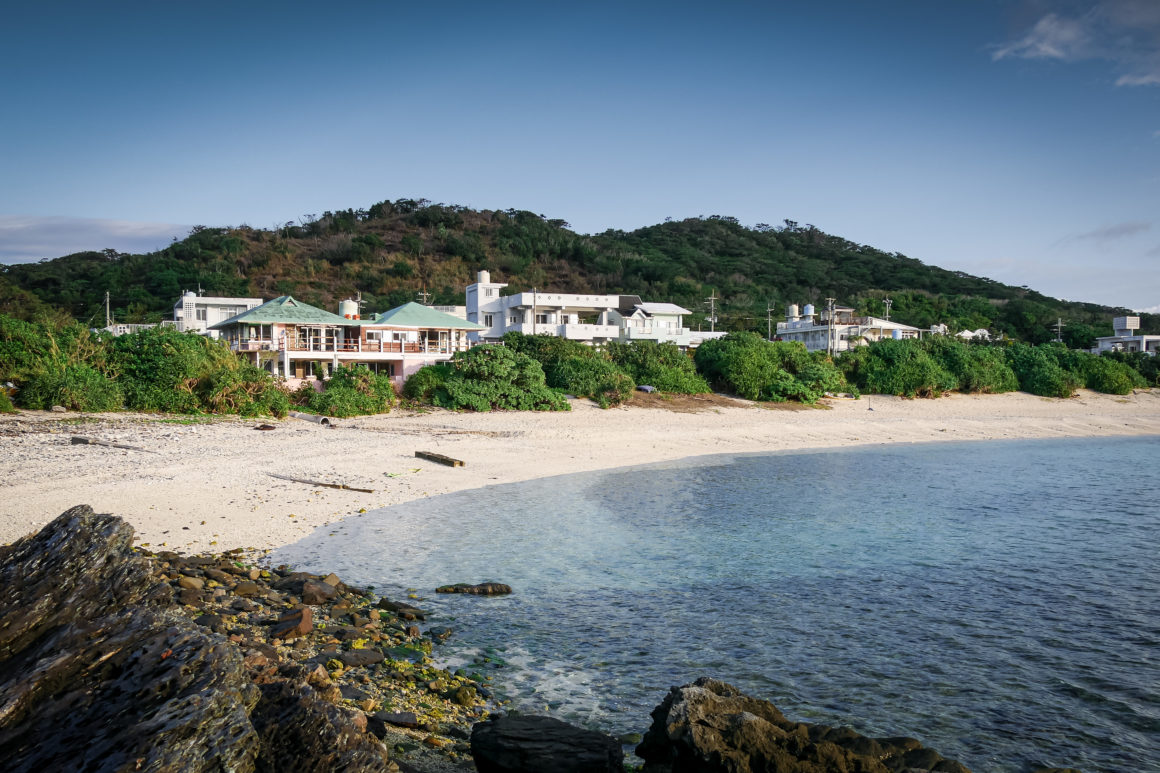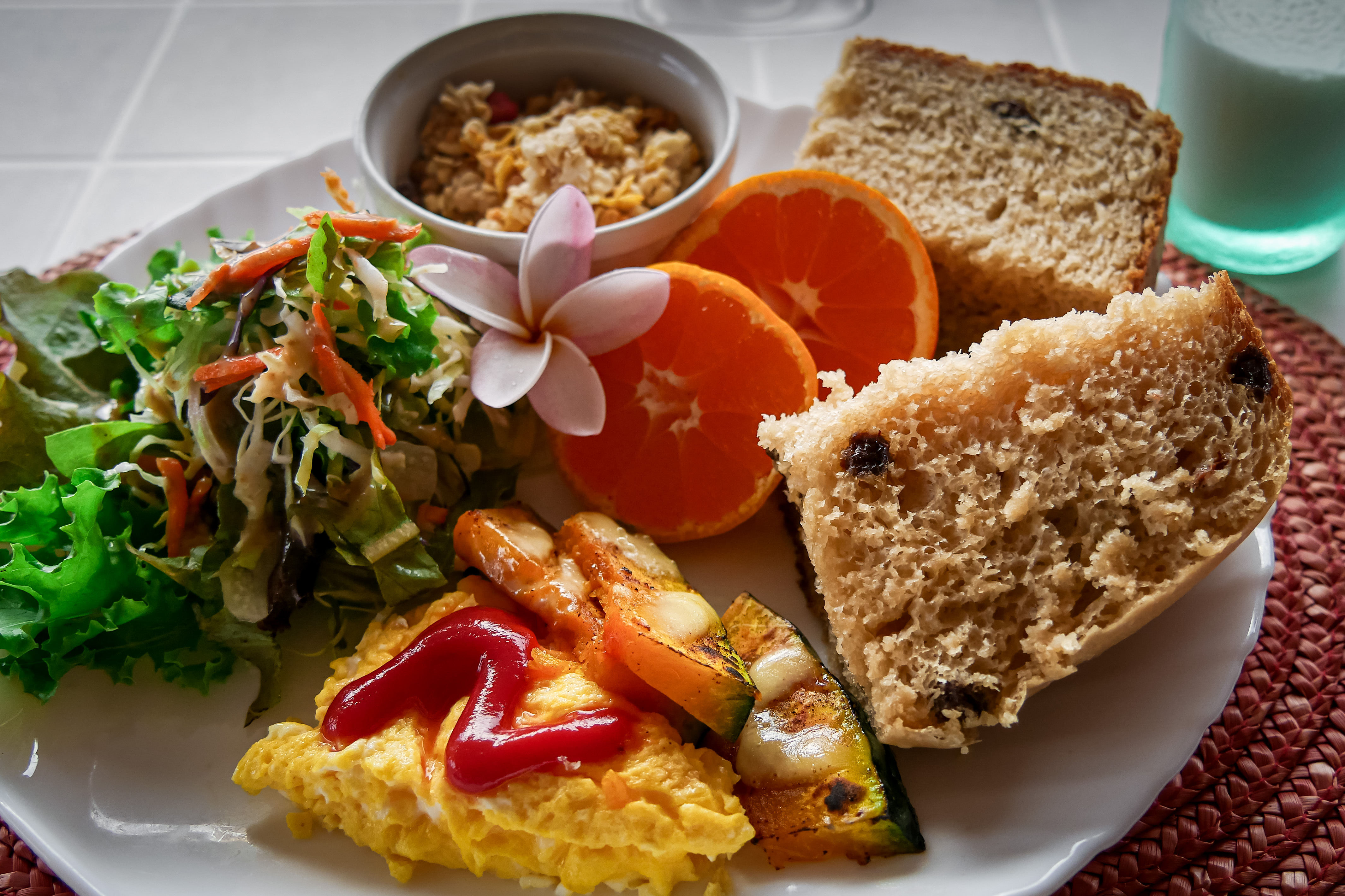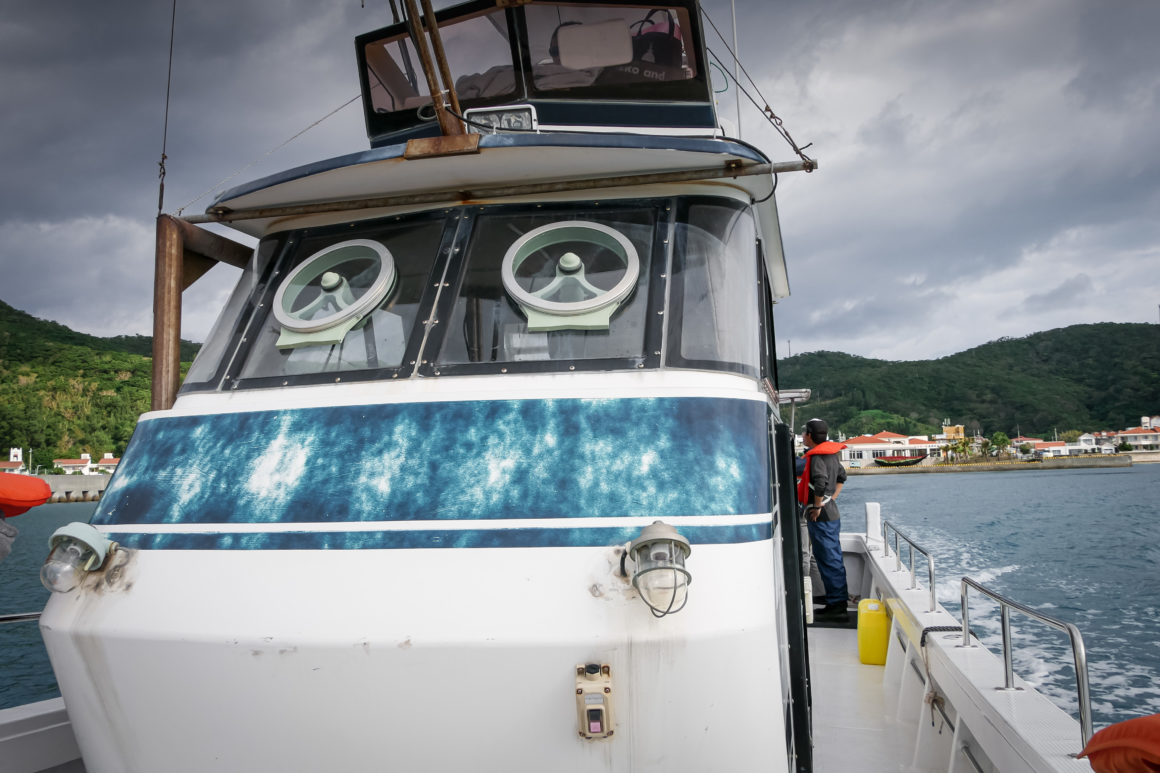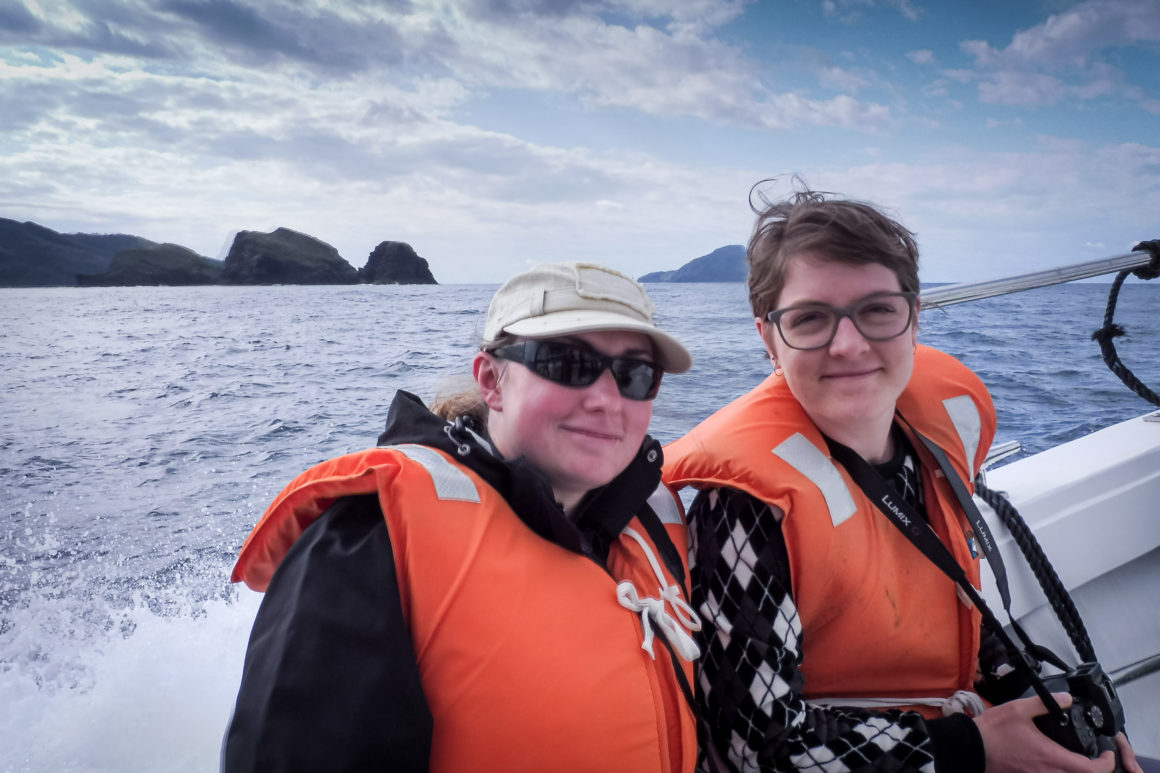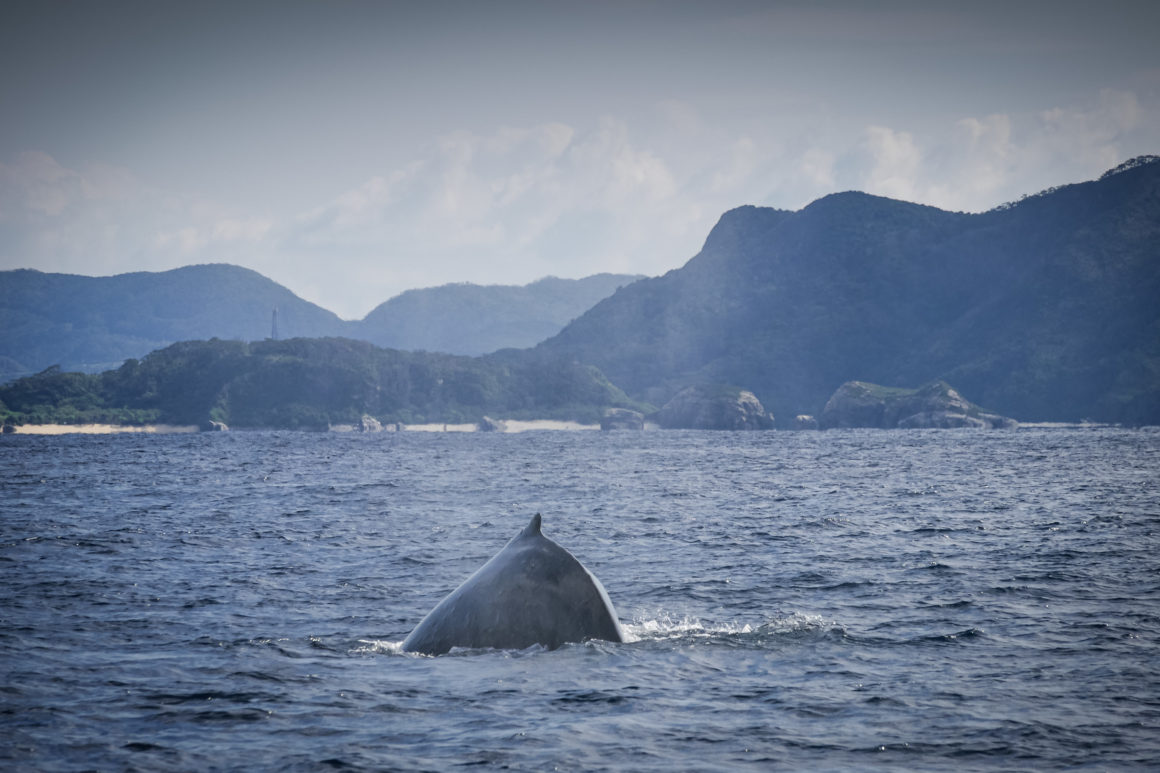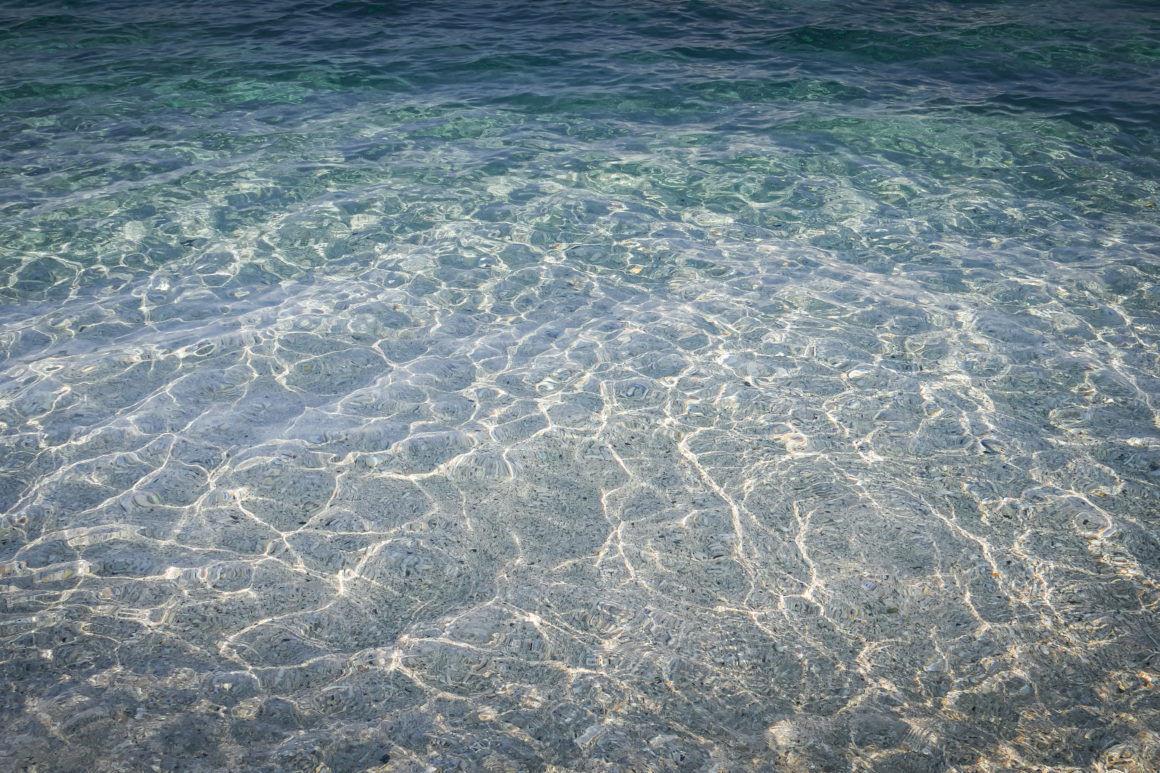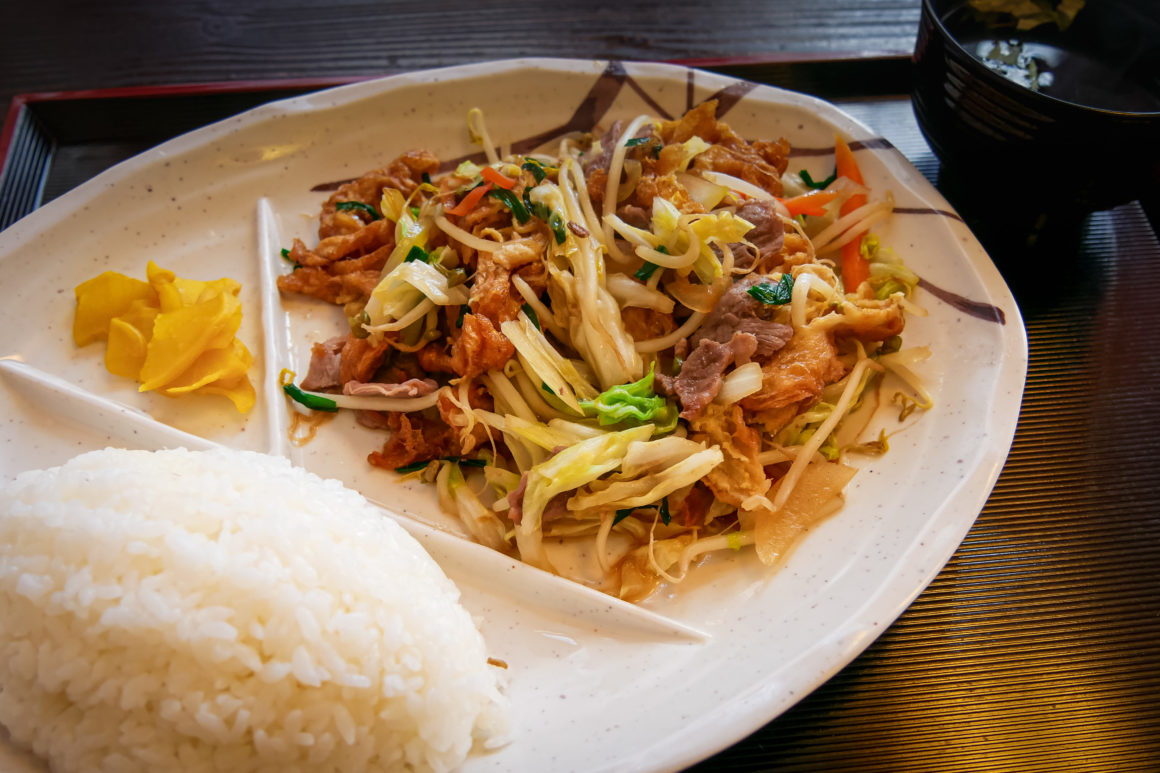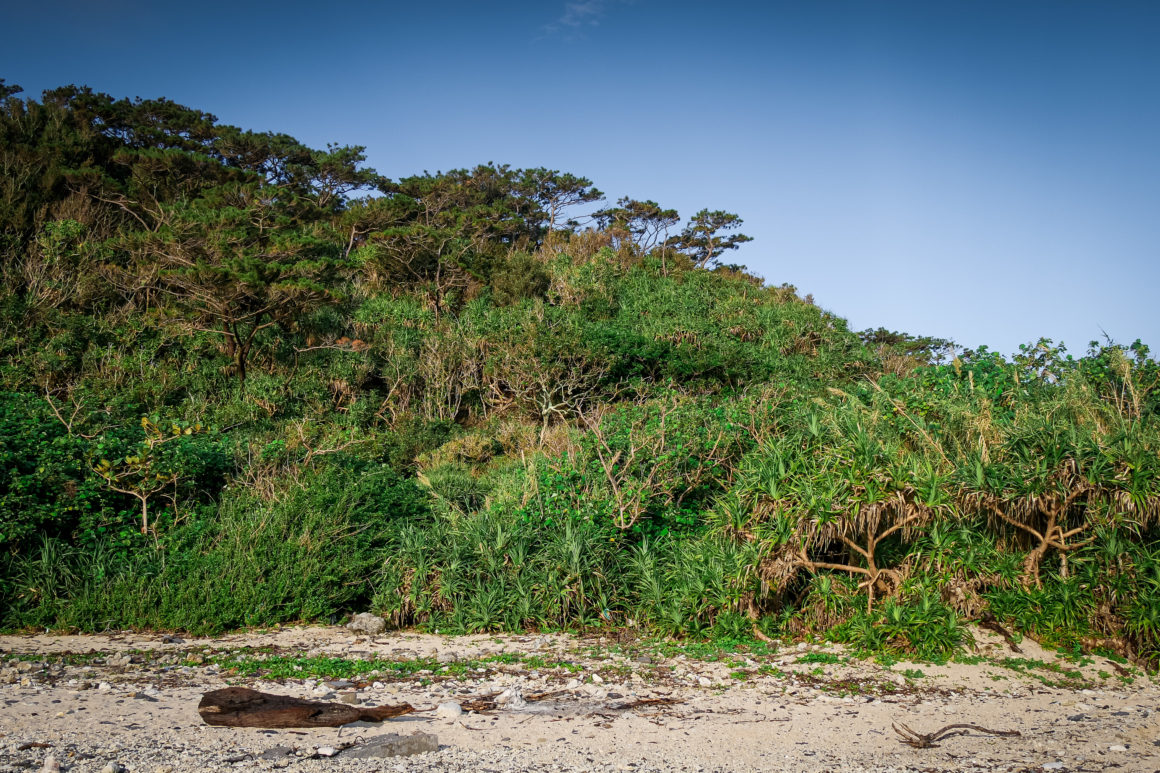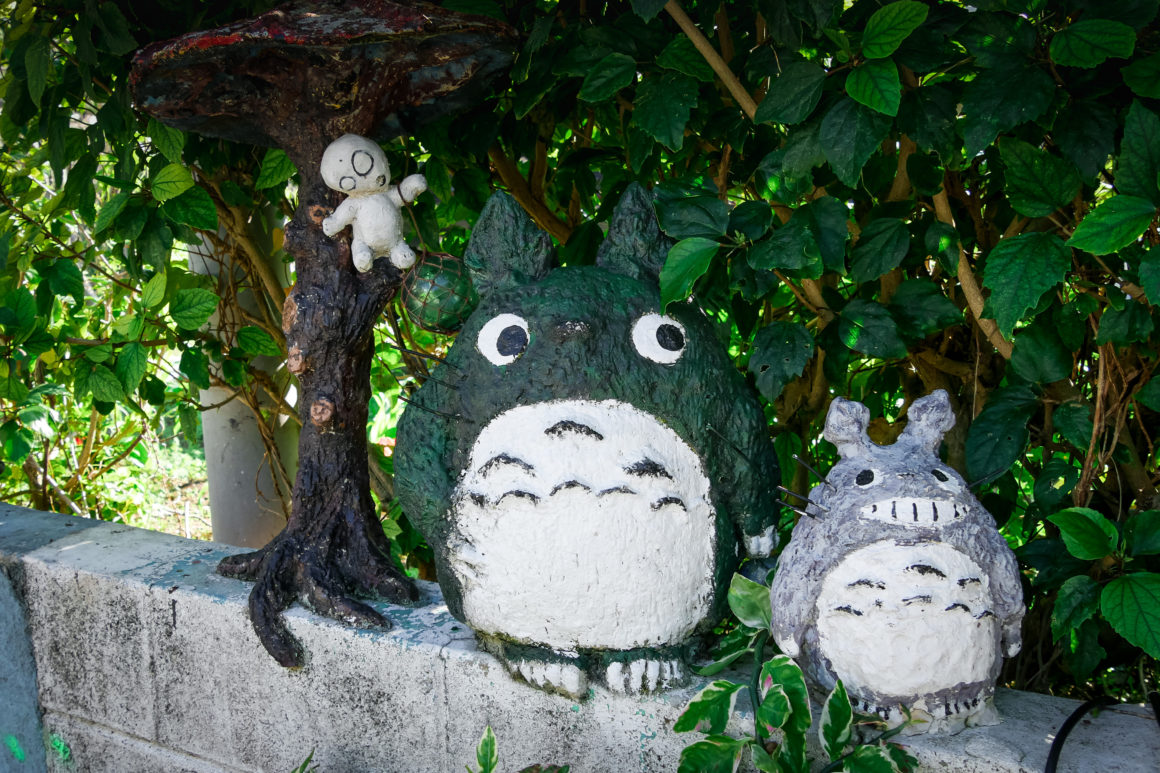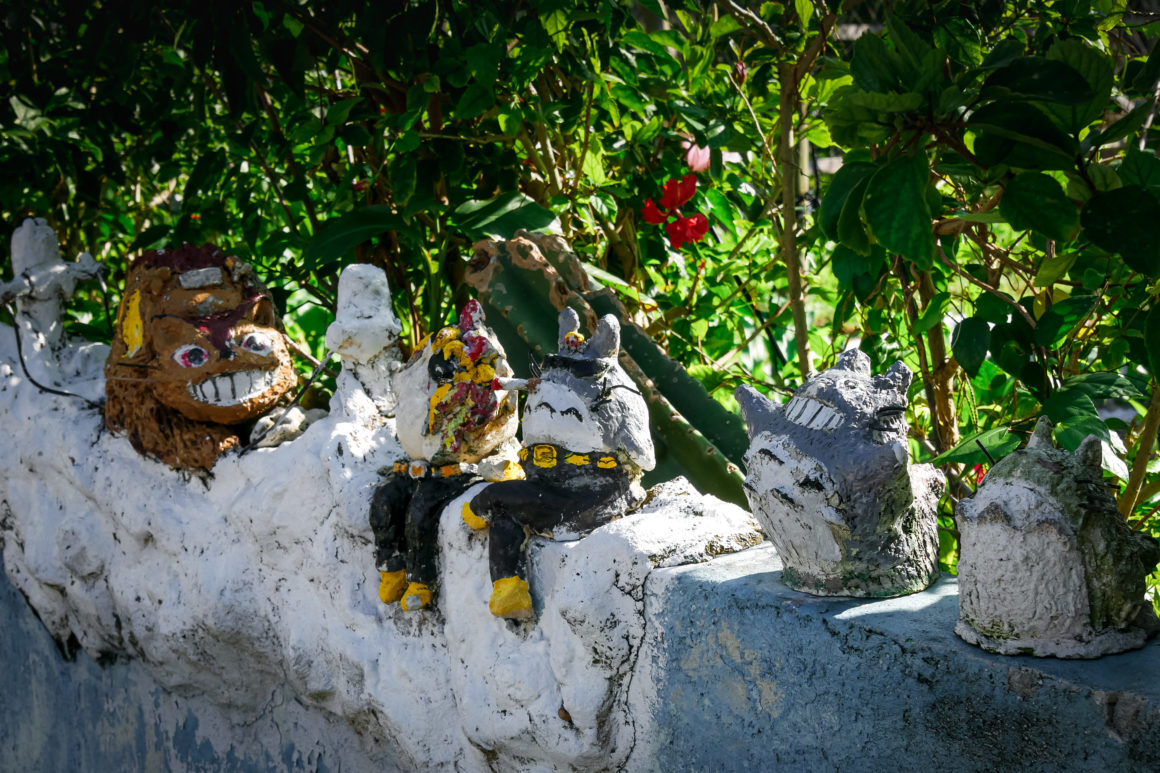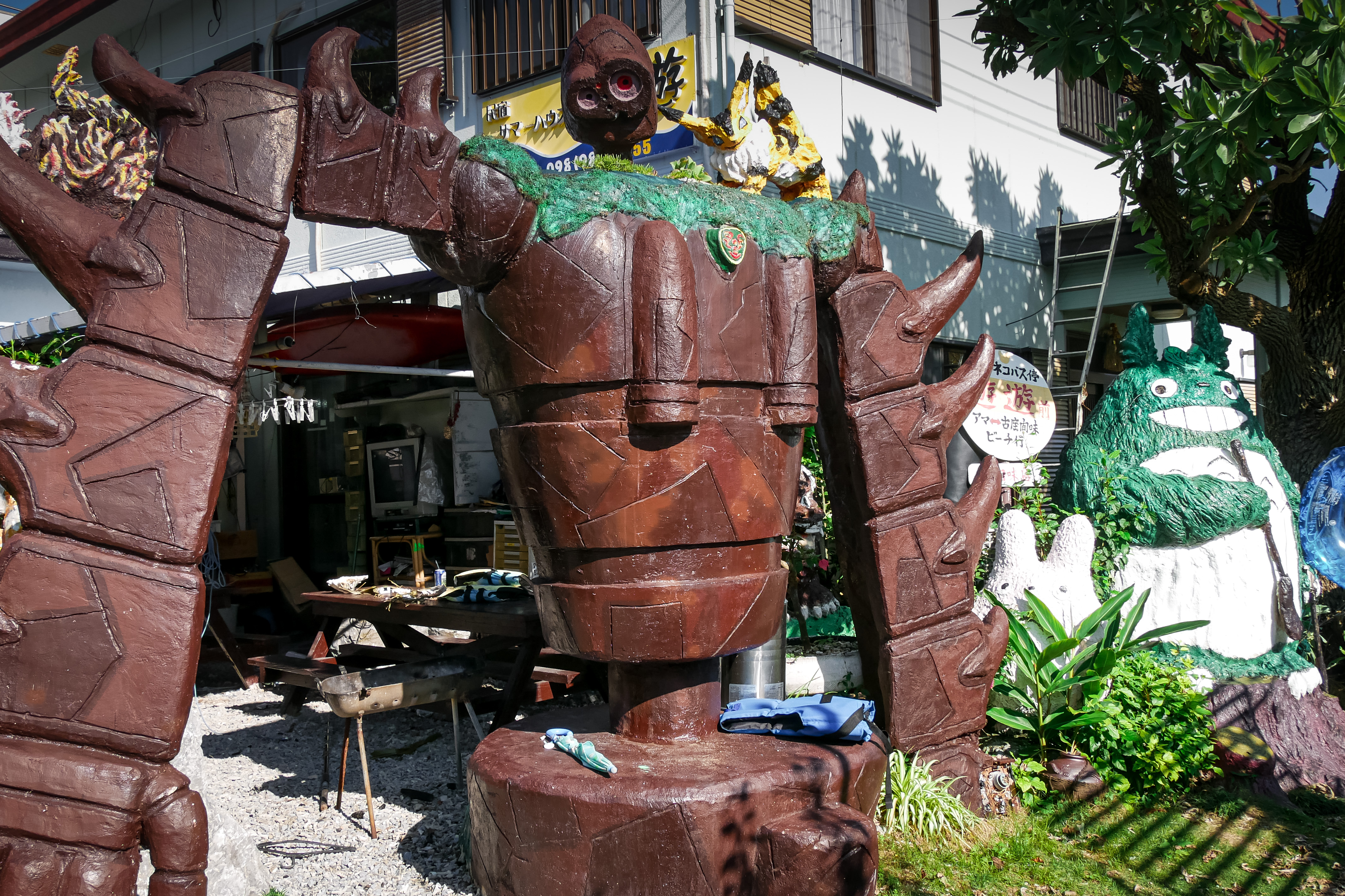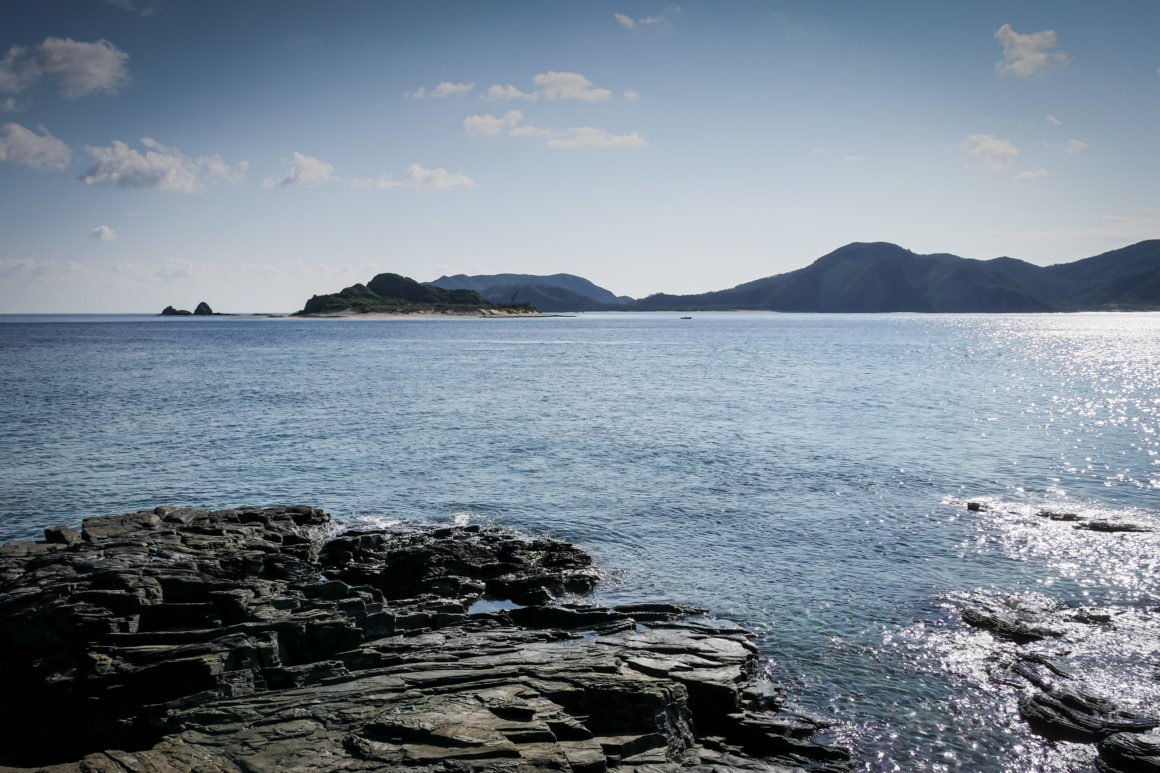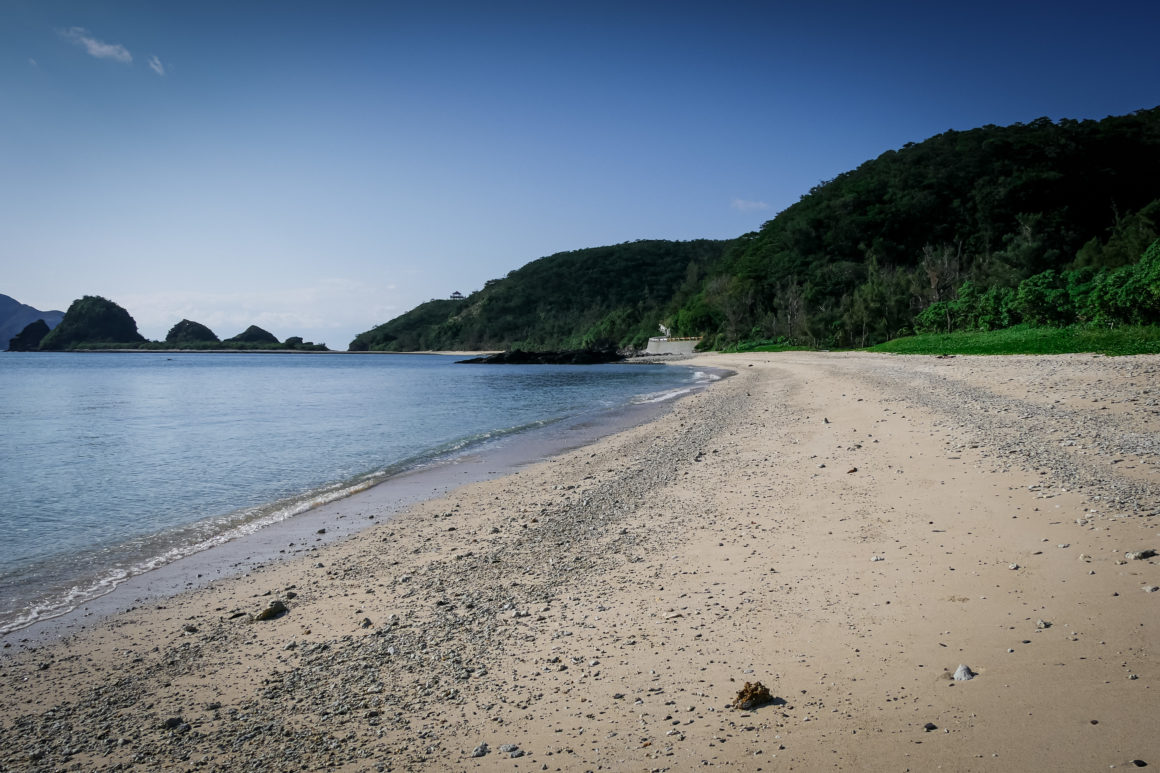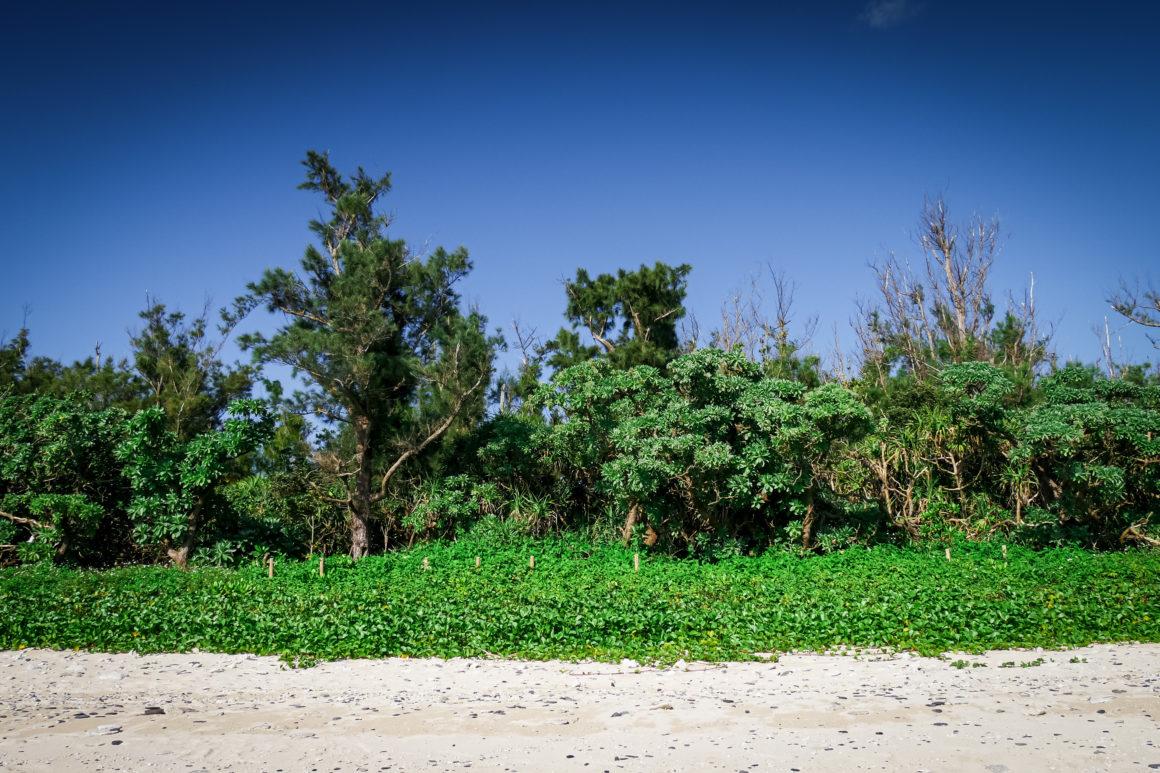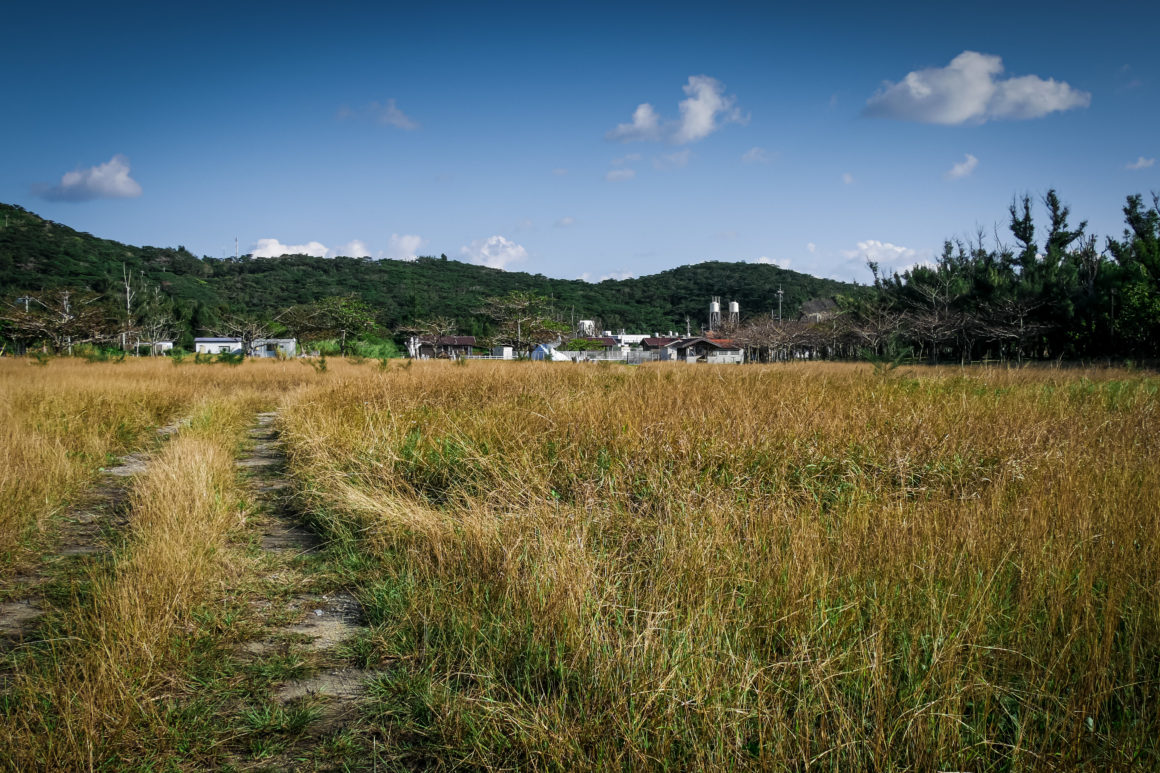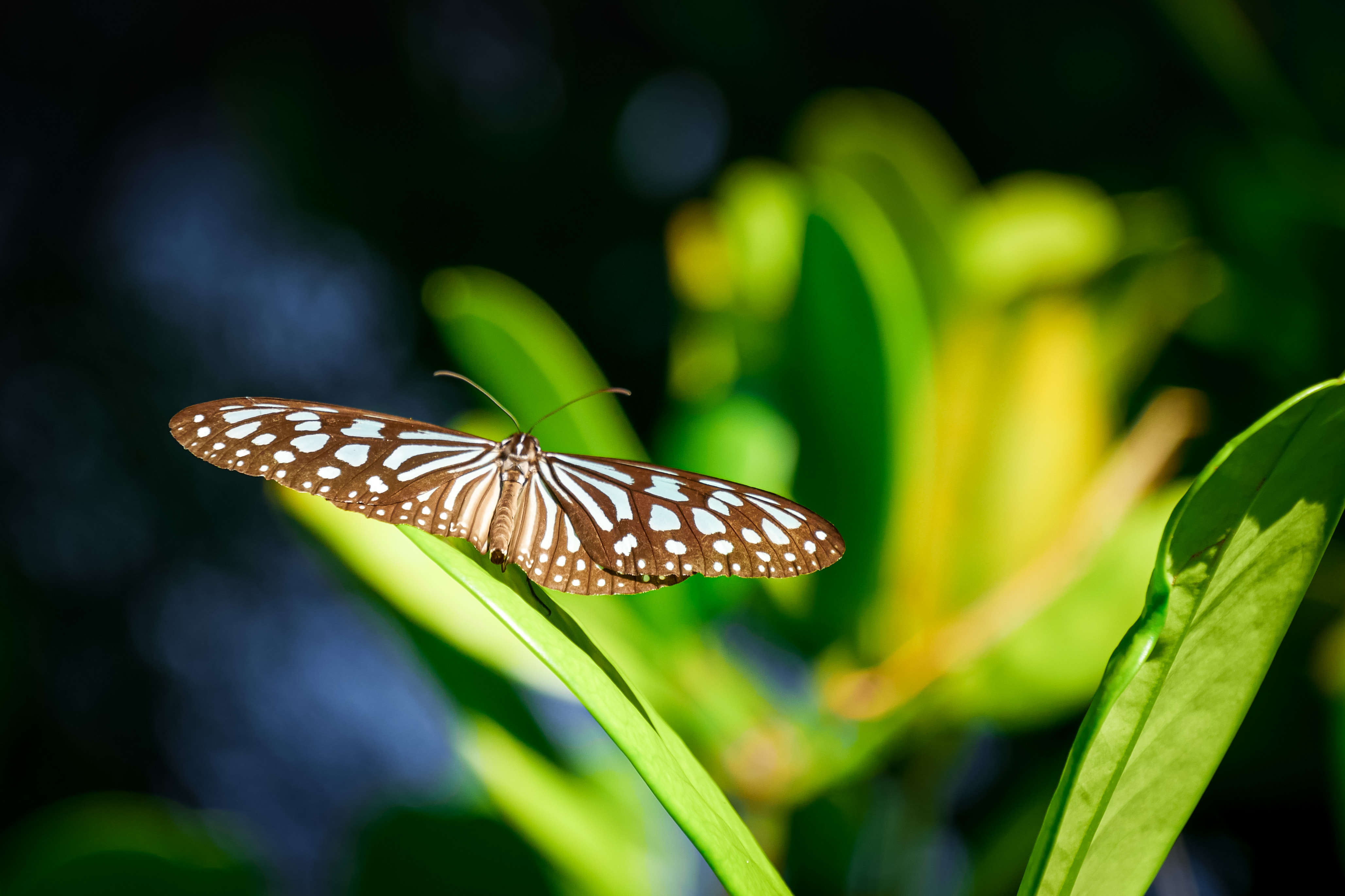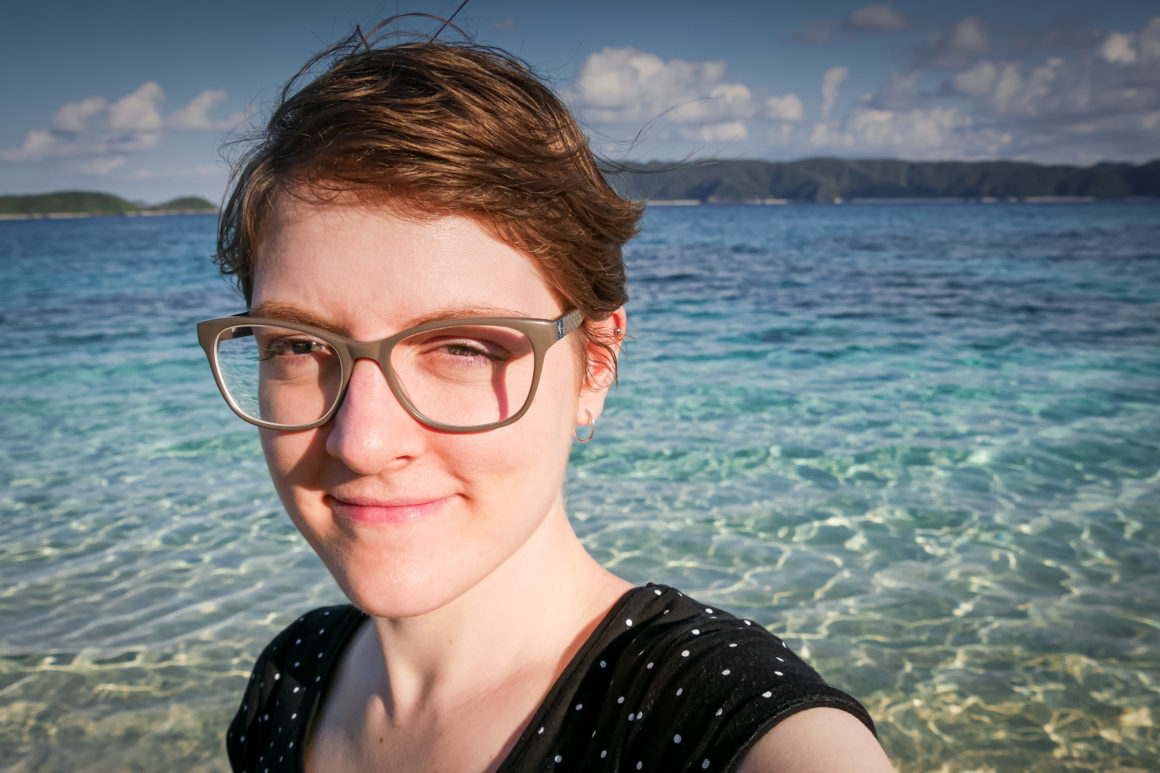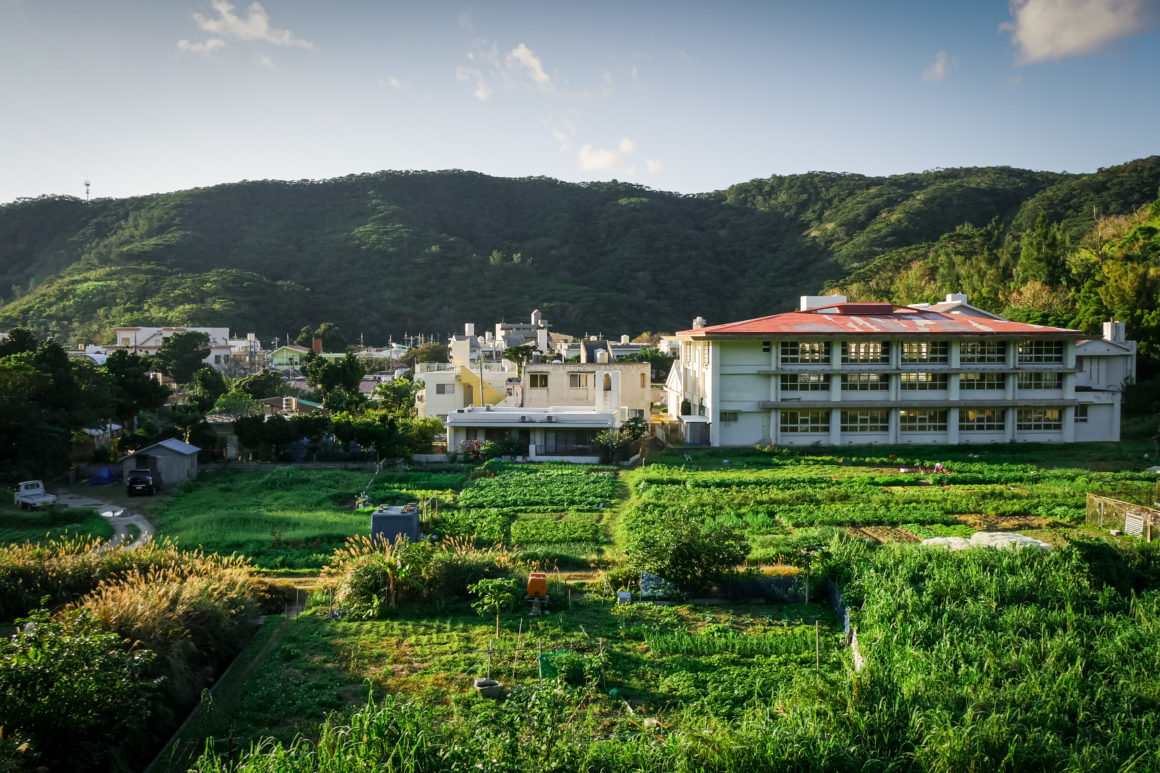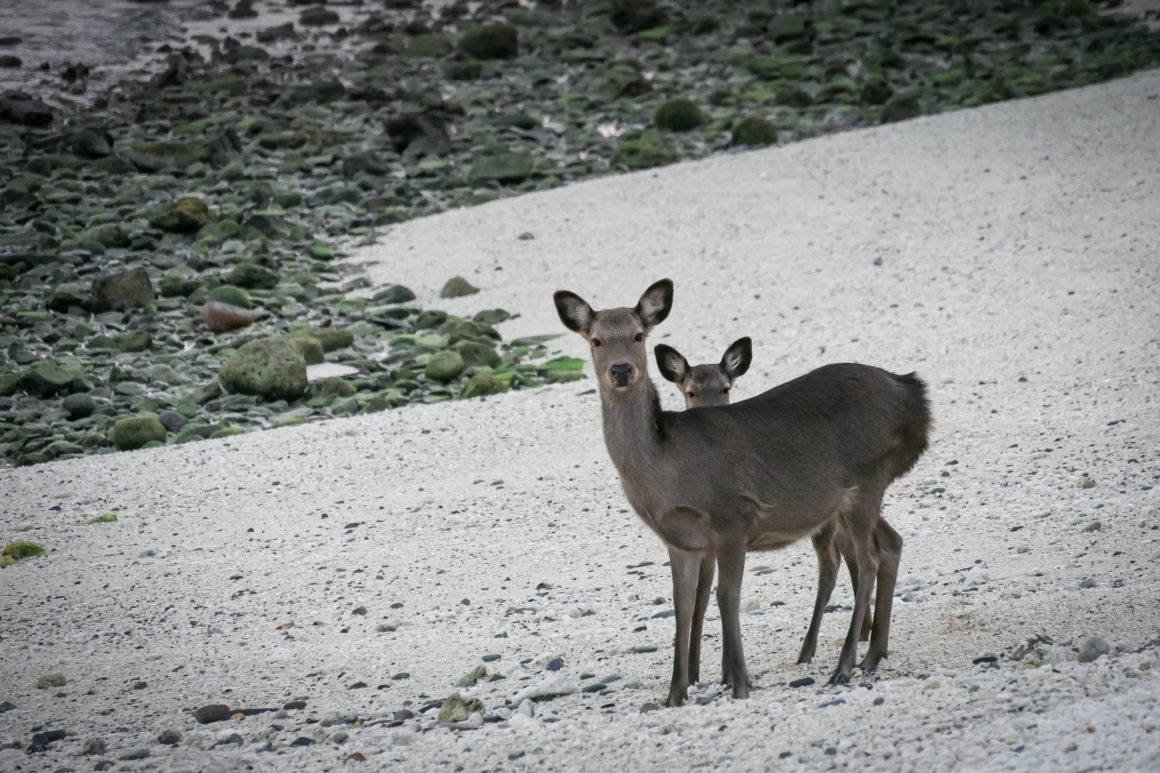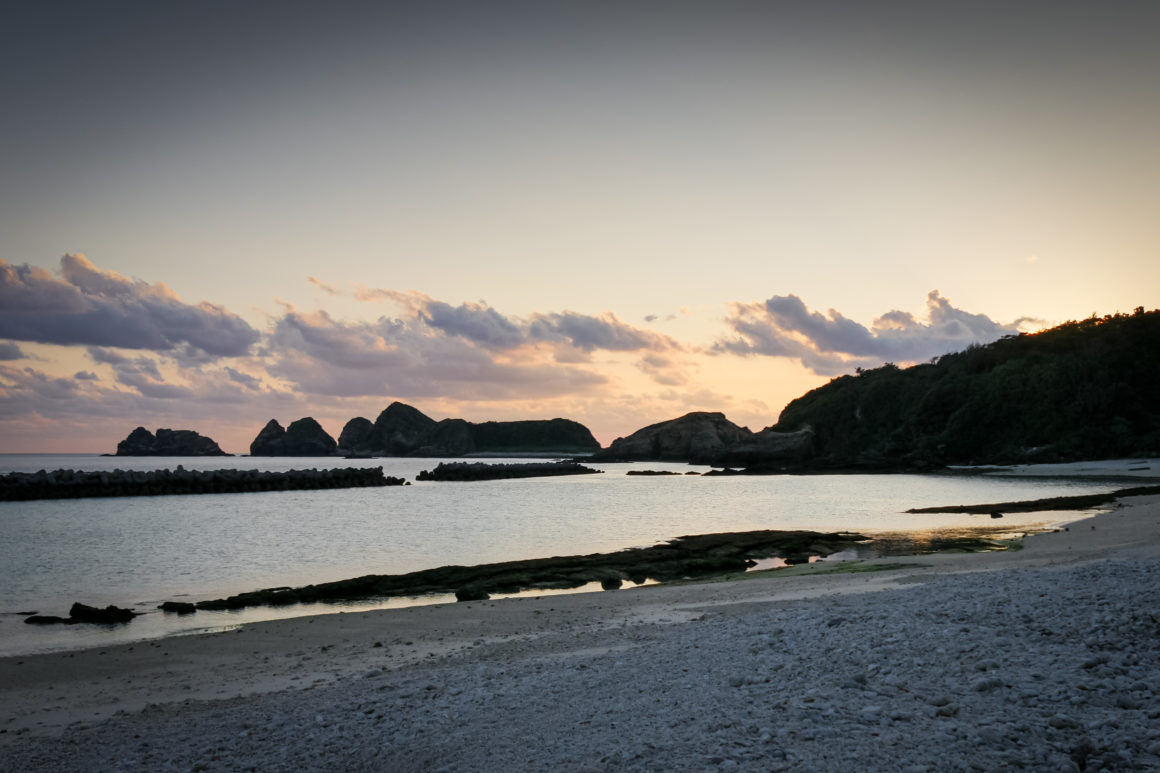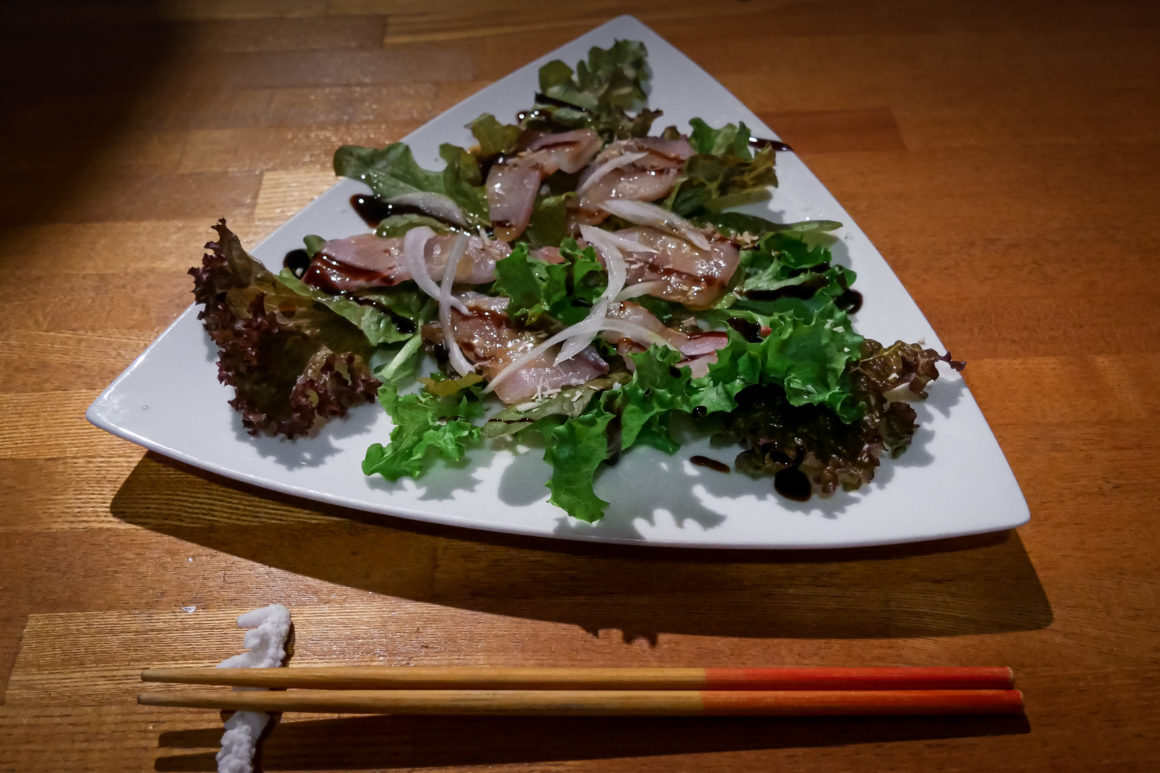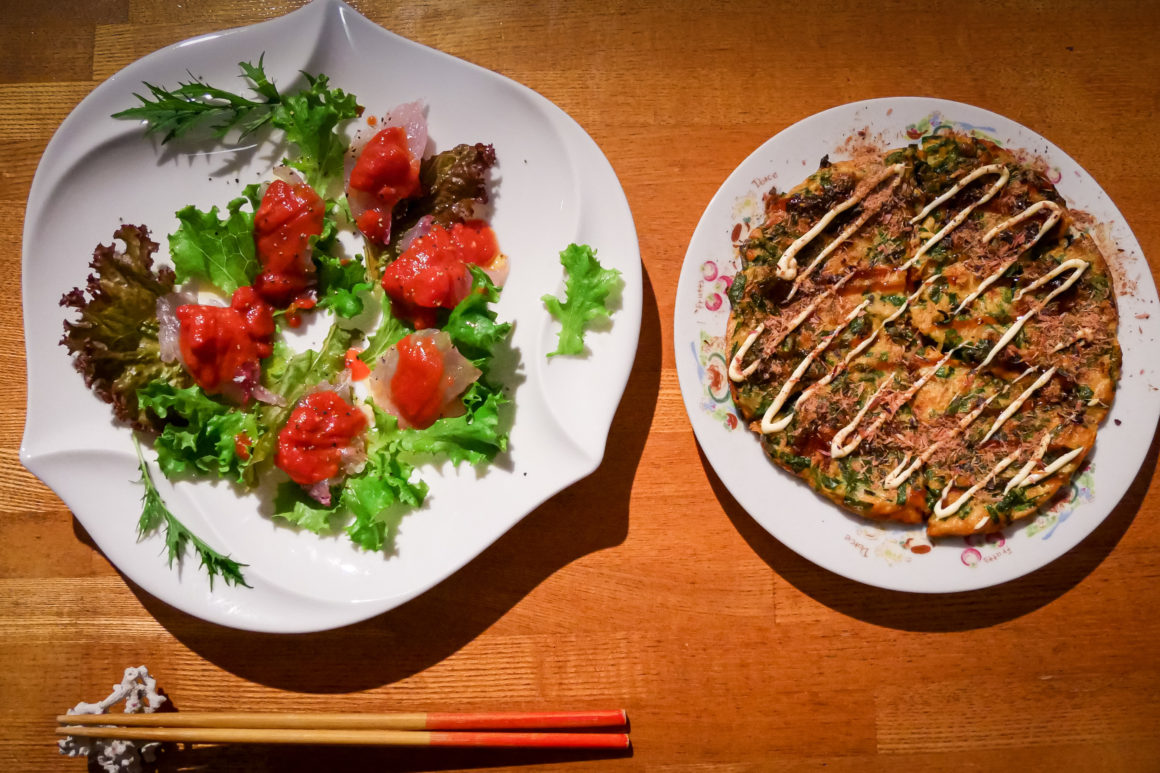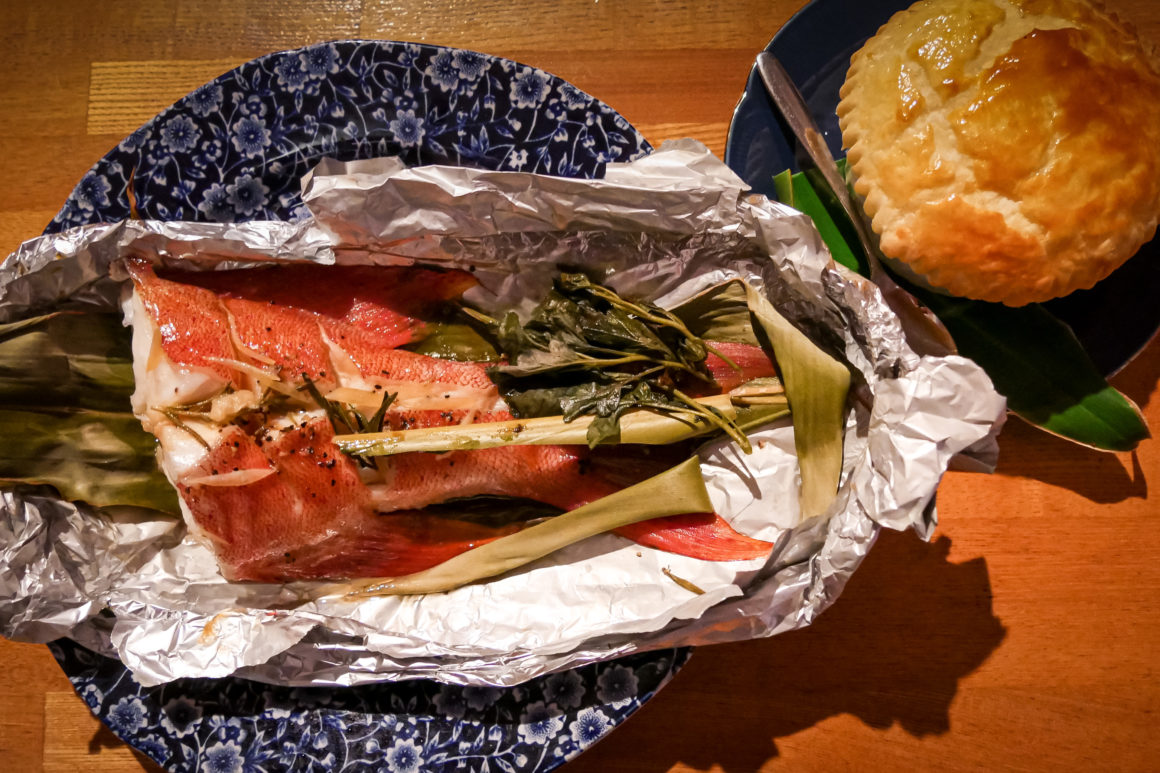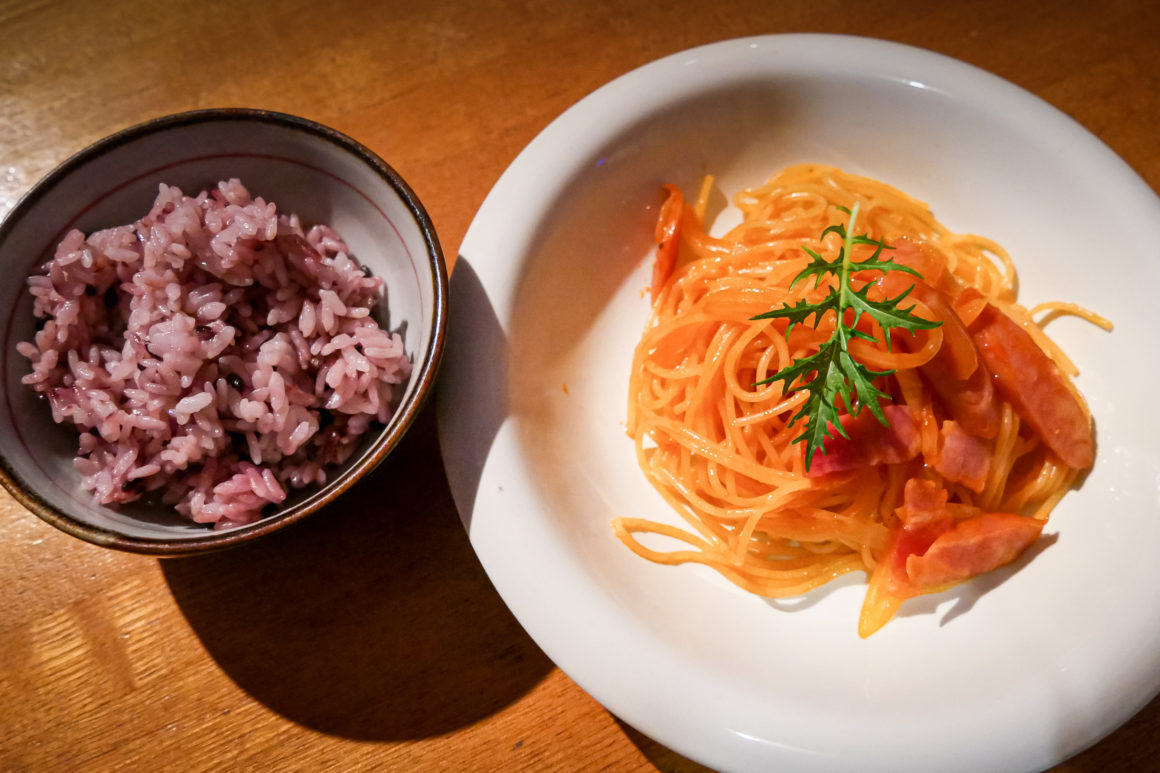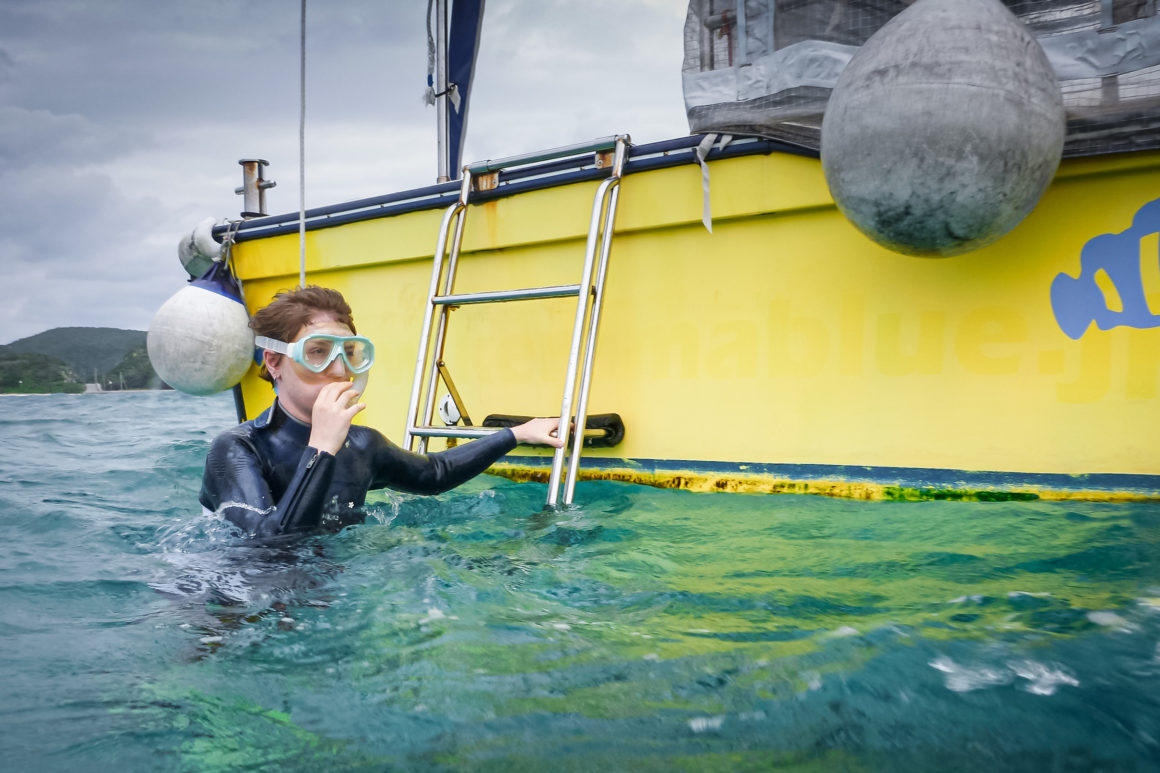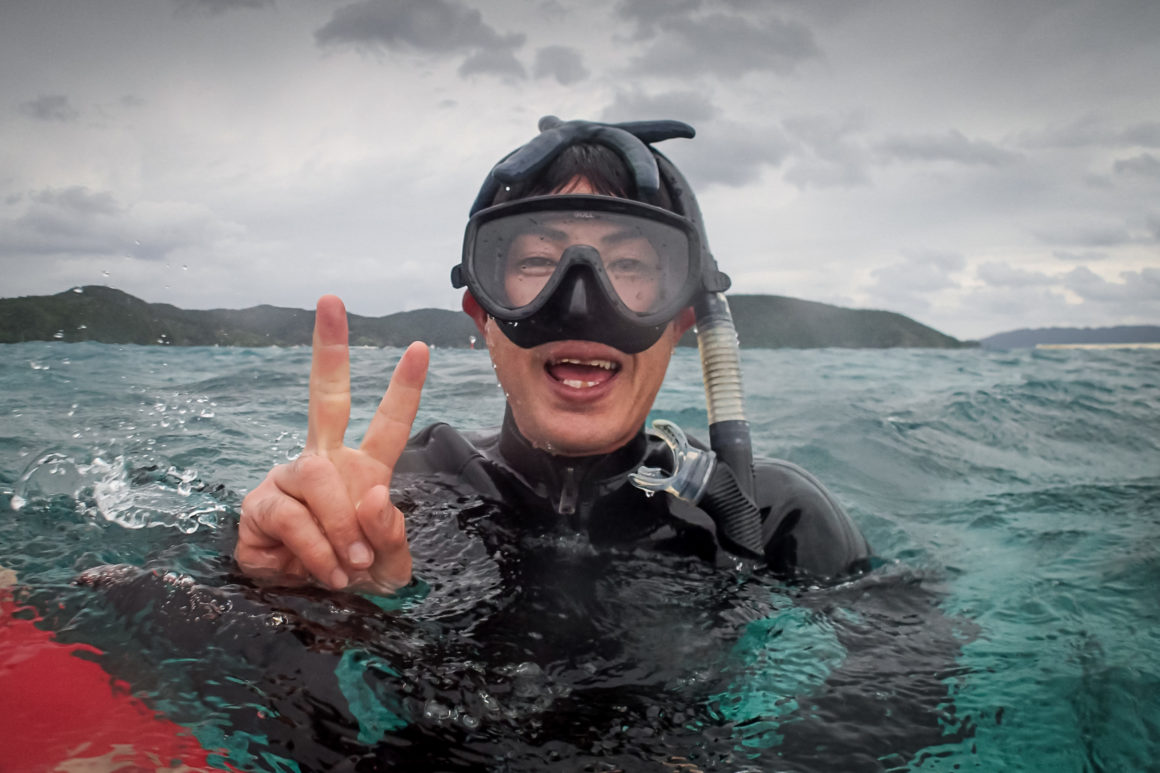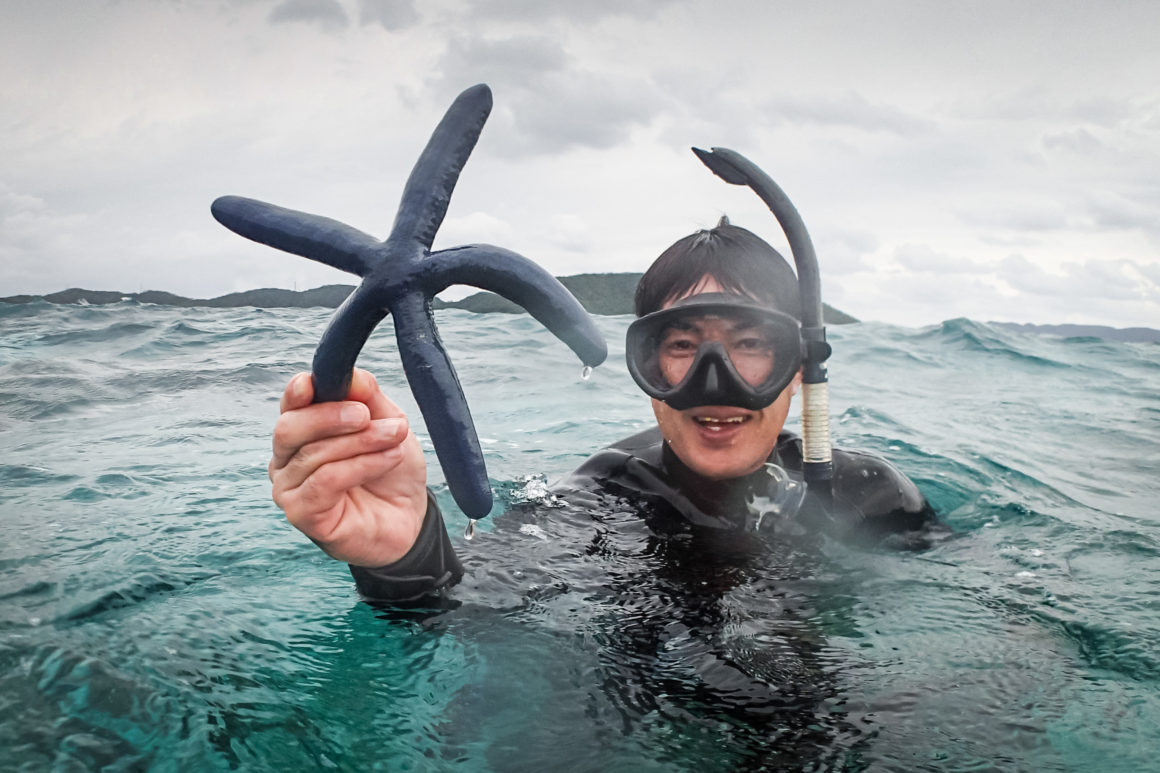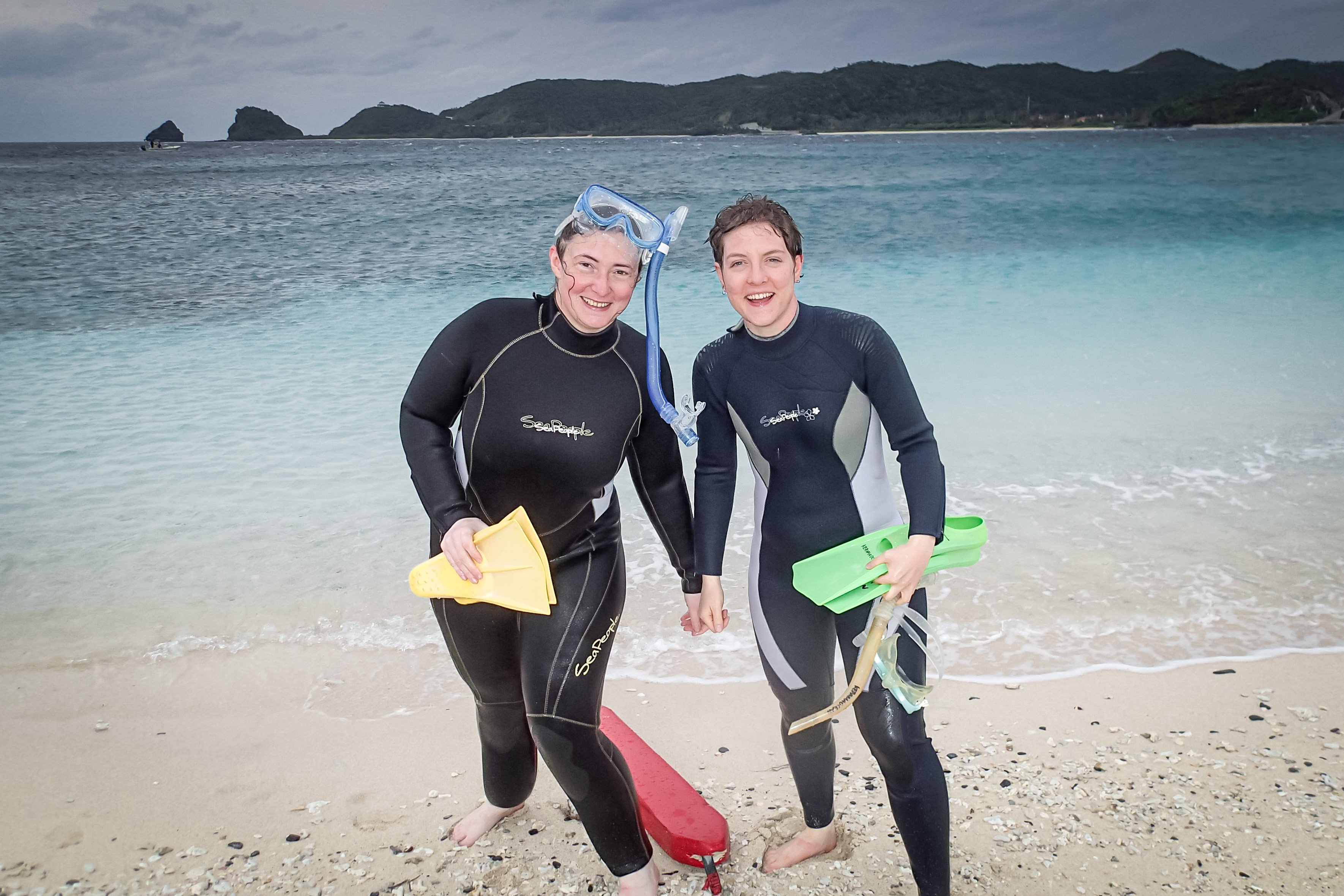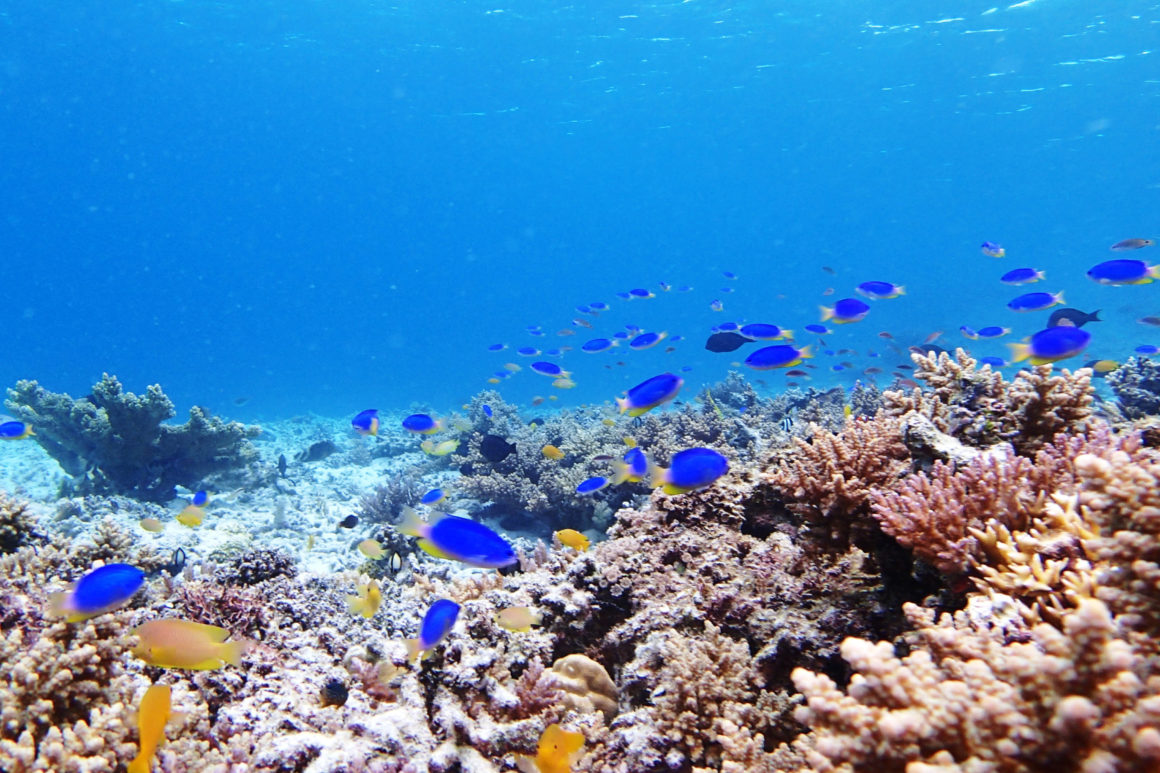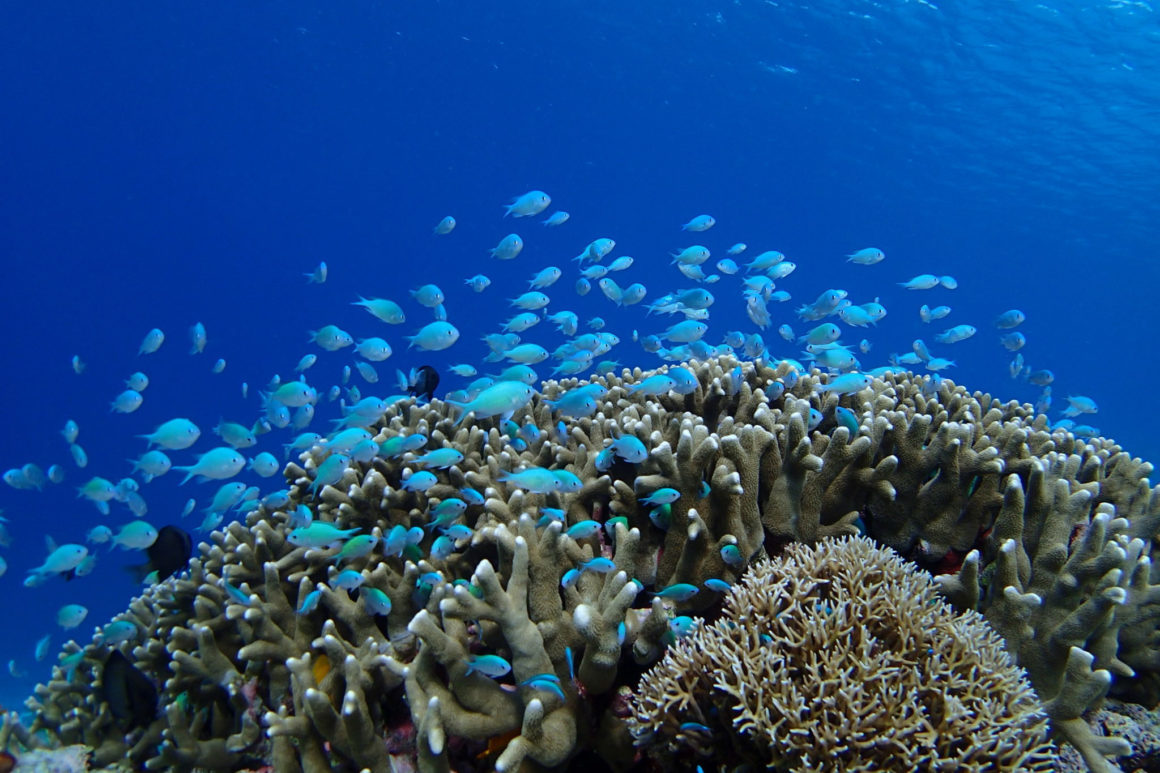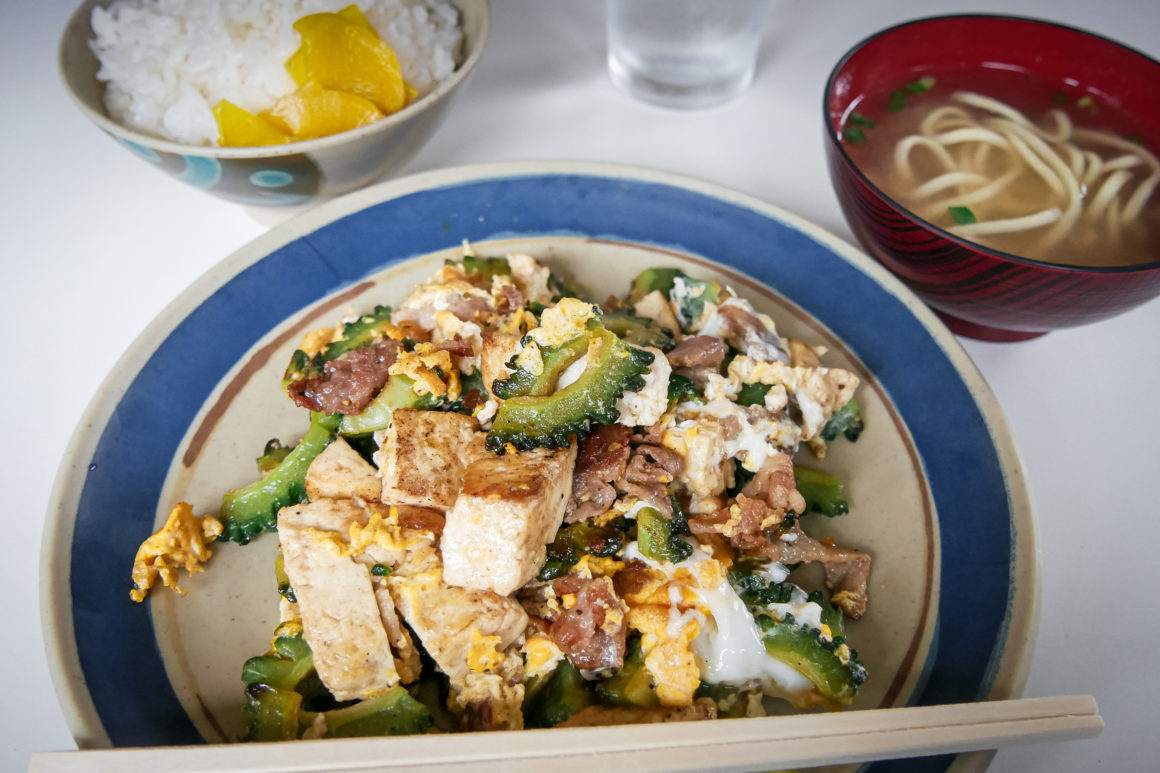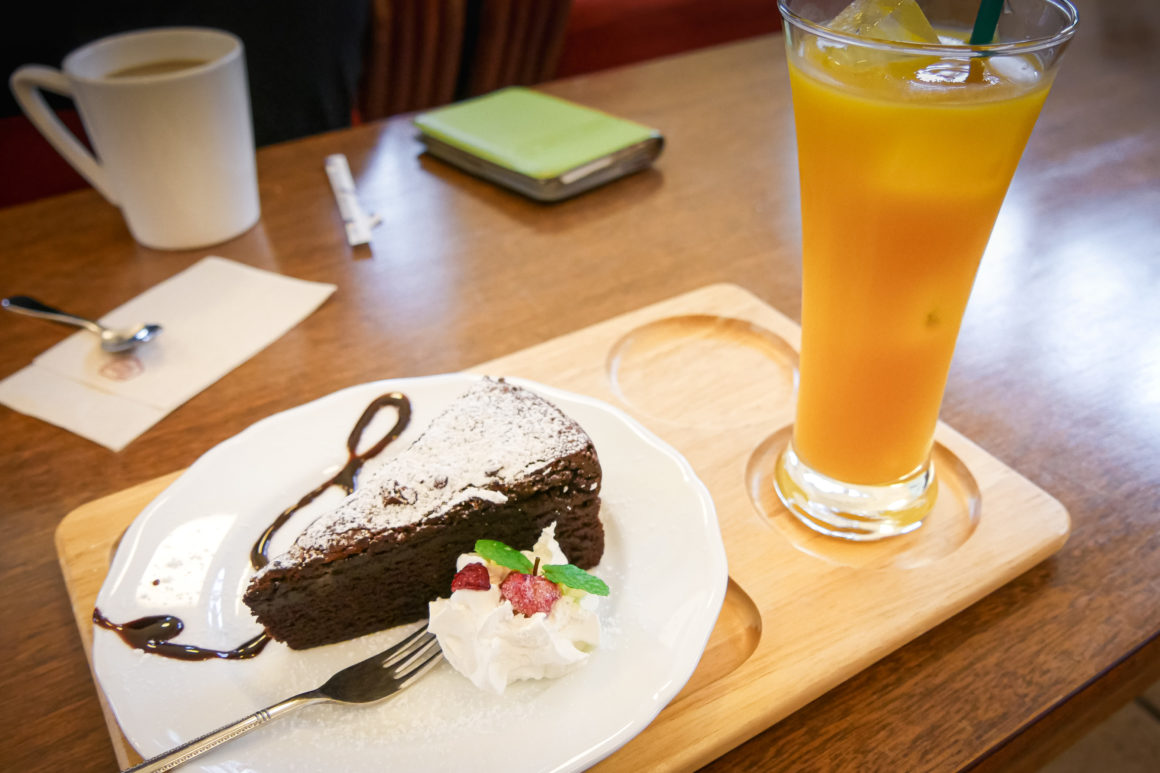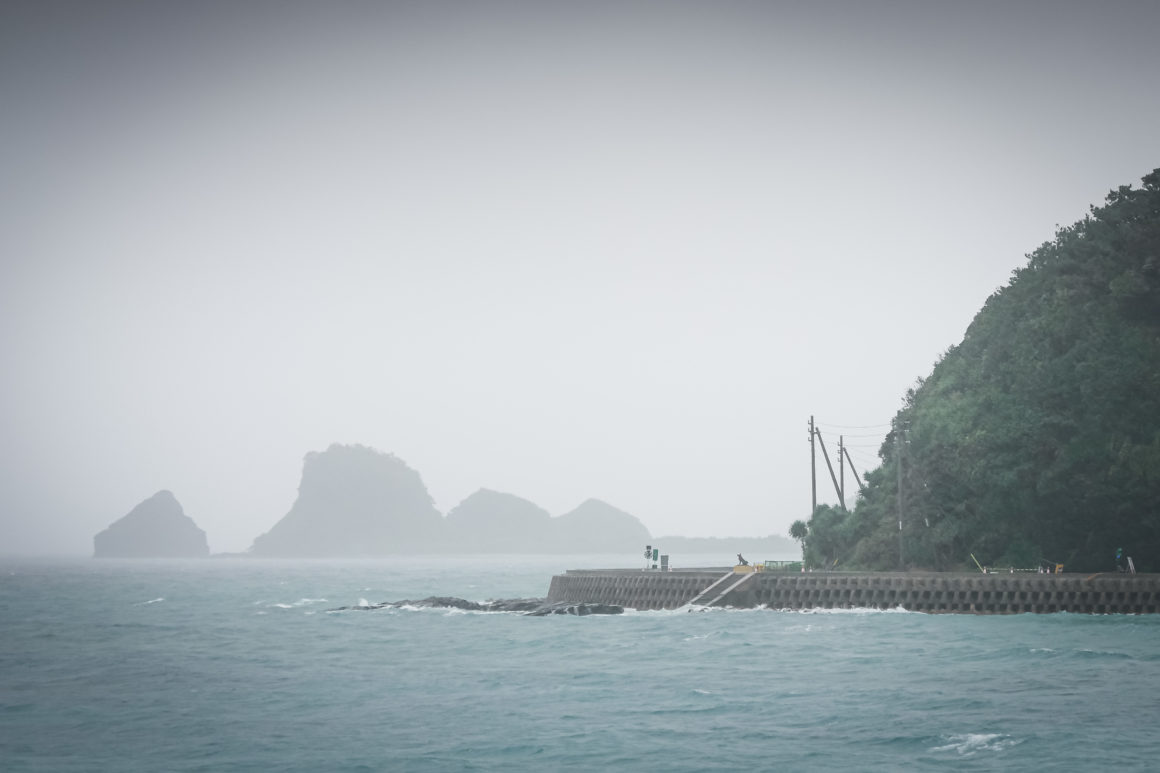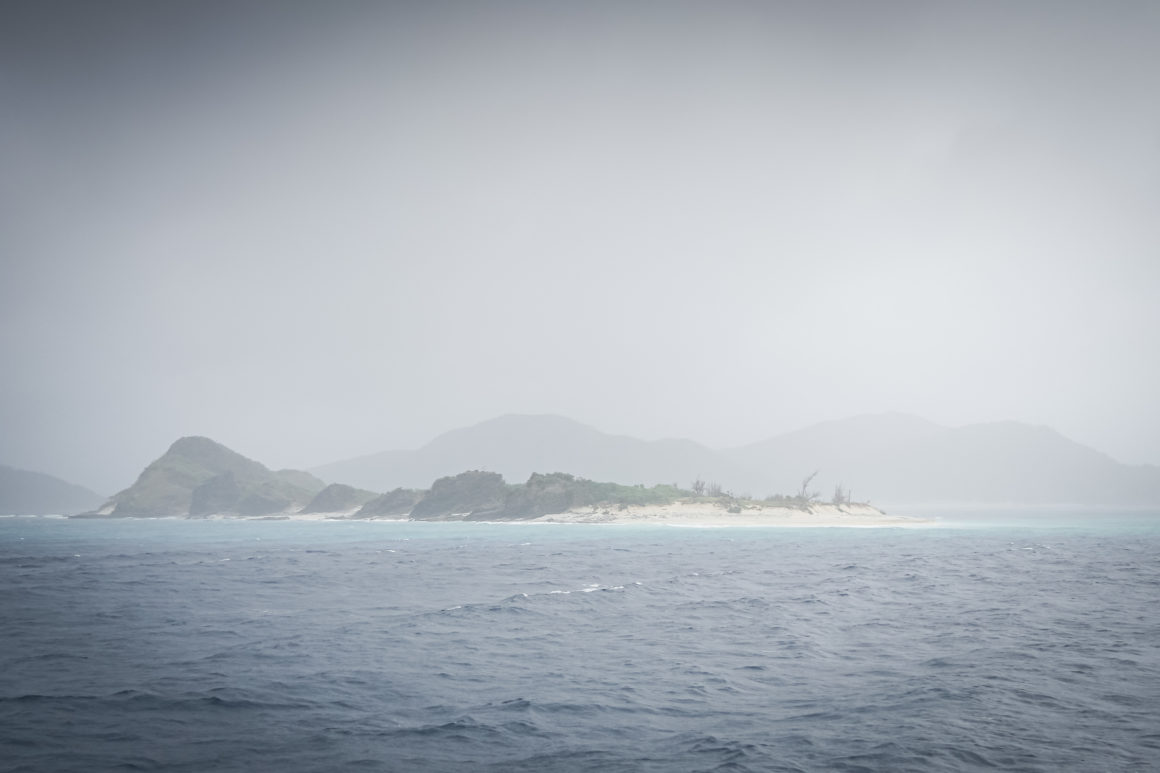DISPATCH
Early wake up Friday January 15 to take the ferry from Naha port to Aka Island. The Kerama archipelago or Kerama shotô, about two hours by ferry from Naha, groups together around fifteen small islands, the largest covering 15 km². Only five islands are inhabited including Aka-jima (3.96 km²) and Zamami-jima (6.71 km²), my two destinations for the next two days. Fifteen minutes by boat from each other, the two islands are home to barely 700 people. True paradise areas covered with lush tropical forests, long white sand beaches and living in a peaceful atmosphere, these are perfect sites for quiet walks, diving or snorkeling.
I disembark on the island of Aka-jima in cloudy weather but the peaceful atmosphere and the tiny village instantly appeal to me. The lady from my guesthouse picks me up at the port. A young German girl who disembarked by the same ferry also stays in the same place as me. Her name is Kristin, 36, and she is in Japan for about 40 days. Our Kawai Diving Inn is located at the far end of the village (barely a seven-minute walk from the port), on the beach! The place is soothingly peaceful. The rooms are gigantic and the toilets and showers outside. The owners, a couple in their 50s, also organize diving trips. Having at the start only planned to walk and cycle on the islands (outings and equipment rental costing too much for me), I still let myself be tempted by the tour to go see the whales organized by the association from Zamami the next day. Indeed the Kerama archipelago is one of the places where humpback whales gather in winter to give birth to their young! In summer, they migrate to the Bering Sea to feed on large quantities of Krill.
After registering, I rent a bike and explore Aka. First stop: the only open restaurant on the island, for a curry rice lunch on the beach. I get to know a French couple in their forties with whom I chat for a long time. Laure and Didier manage an exchange association between French and Japanese and regularly come to the island. They offer to come and see how tofu is made the next day! I accept with great pleasure. We split up and I go back to my bike parked in front of the restaurant entrance. No need to hang it with a padlock, nobody will steal it. While cycling along the beach and despite the gray weather, I am overwhelmed by a feeling of freedom and joy. I tell myself that happiness should probably look like this: a bike ride in a beautiful environment and bathing in a peaceful atmosphere.
The water is a magnificent color: turquoise along the beaches and then deep blue after ten meters. I walk my feet in the sand looking for shells, enjoying the melody of the waves crashing on the beach. At the corner of a bend, I come face to face with a group of hinds. Called Sika of Kerama, they are descendants of deer brought from Kagoshima by the Satsuma clan during their conquest of the Ryukyu archipelago in 1609. This species is only found on the islands of the Kerama archipelago. Smaller in size and darker in color than continental deer, they are a protected species.
At the end of the afternoon, I go up to the observation point of Nakadake, almost in the center of the island. The bike ride is laborious and I end up getting off the bike to continue on foot. I am alone in the middle of nature surrounded by birdsong. Smells of pines, flowers, humidity, sap come in strong puffs to intoxicate my sense of smell. Going down from the observation point, I pass to see the “secret” beach that the lady of the inn indicated to me. Indeed a small path winds for fifteen minutes in the middle of the jungle before leading to a magnificent beach. At nightfall, surrounded by animal noises, the journey is impressive.
I go back to the hostel, right for dinner. It is a real treat waiting for me. The owners of the inn being divers, we are entitled, Kristin and I to several kinds of fish caught in the morning! Fish salad as a starter, smoked fish accompanied by Okinawa mash / sweet potato soup (purple in color), the main dish (I forgot to take a picture of it) made of tuna with mash / bellows of potatoes and vegetables and pasta and for dessert another Okinawa specialty: Mochi (rice cake with sticky texture) made from Okinawa purple potatoes, wrapped in banana leaves. The set is very good although a little heavy for a dinner. The mochi have a really special taste that comes from banana leaves.
Peaceful atmosphere (the sound is really low)
The next day, wake up at 6 a.m. to join Laure and Didier around 7 a.m. to go see the tofu preparation. We join the house of an old lady already at work who prepares tofu in the traditional way like her mother before her and her grandmother before. The know-how has passed from generation to generation and the next girl who will take up the torch has already been decided. I watch her activate, mixing soy milk following centuries-old gestures. Tofu is made from soybeans that are crushed to form a puree. The puree is then filtered and pressed to obtain the soy milk. The milk is cooked for half an hour, stirring constantly, to which salt and other natural coagulants are then added. The pulp is then pressed and molded and becomes tofu as it cools. My breakfast being at 8:00 am I have to leave when the milk begins to cook. I would have liked to see the entire creation, but whale watching awaits me.
I come back to the hostel taking some pictures of the village, the guesthouse and the beach, the good weather apparently being on its way. I have one of the best breakfasts I have had since I have been in Japan, homemade bread is a real delight and leave with Kristin to reach the island of Zamami where the start of the outing is located. It’ is sunny weather (finally!). We set off on a small boat, a group of ten people, to watch whales. The companions are very friendly. The journey at sea to reach the place where we are going to observe three whales, fills me with joy. Sitting almost on the bow of the boat, I welcome the leaps of the boat on the waves and the spray with happiness. Alas, the observation is not very fruitful. In three hours, we only managed to see a few clouds of vapor and a few fins. A little disappointed (I expected to see whales grazing our boat, performing jumps or tail strokes). Perhaps they are annoyed or frightened by the many boats that have come to observe them. What I understand very well. I console myself by looking at the superb patterns of the clouds in the sky and enjoying the boat ride.
Back on Zamami, we go see the small tourist office since Kristin wants to do snorkelling tomorrow morning but accompanied by a guide. Finally I also let myself be tempted, telling myself that it is a bit of a shame to be in such a beautiful place and not even go watch the fish and corals. Then we go have lunch and then I rent a bike and go around the island. In the village I come across a small bar decorated with sculptures from films from the Ghibli studio! Lots of Totoro, a cat bus, Tetho (Nausicaä’s animal), a little Kodama and a superb sculpture of one of the robots of the Castle in the Sky! Oh my, what a joy!
I then walk on the coast going to see the different beaches. Ama beach has a large site for camping (desert at that time). Large spaces to pitch the tent, small wooden houses, a swimming pool … As I walk across the small path zigzagging through the tall grass, I imagine the place in the height of summer, full of animation. I then head for Furuzamami Beach, a jewel of the island according to the guide. Indeed the places are magnificent. It is hot, the smells are intoxicating, the place is absolutely calm. A true paradise.
I stay a long time feet in the sand to appreciate the beauty, the softness of the sun and the calm. I then join Kristin and we leave for Aka. We return to the hostel by walking on the beach and see two hinds, a mother and her young right in front of the hostel. They stare at us without moving. The evening meal is like yesterday’s, consisting of a large number of dishes based on fish caught the same morning: fish salad and pizza “Okinawa style” as a starter, main dish consisting of a whole fish. (cut in half, since we are two to eat), red in color, accompanied by a bellows / mashed potatoes, spaghetti and rice. Good but heavy for the evening.
Sound of the waves
The next day, Sunday January 17th, we wake up early, Kristin and I for a very good breakfast and join again Zamami where our guide for snorkeling is. Since I take the ferry in the afternoon to return to Naha, I take my big bag with me. Once in Zamami, I buy my ferry ticket which leaves at 2 p.m., then we join our guide, Jun, a man in his forties, very kind. Unlike yesterday, the weather tends towards bad weather. A very strong wind has risen and large, threatening gray clouds are appearing. A little worried we ask our guide if the outing is still planned. He tells us that yes, but that the conditions are not going to be ideal. Now that we are here, we still decide to go. Put on the wetsuits, prepare the masks, snorkels and fins and off we go. Unfortunately the weather is getting more and more cloudy and it is in a rough sea and under a stormy sky that we make our exit. Scheduled for two hours, the sea trip will only last one hour, the conditions becoming too dangerous. Indeed the waves and the current make snorkeling and taking photos difficult and it is cold. Watching corals and fish is really not ideal. We still manage to observe some pretty colorful fish as well as starfish and sea cucumbers.
We return under torrential rain. Back at the store, Jun is kind enough to reimburse us for part of the price and to send us photos taken under ideal conditions (I have put them below). Fortunately he was here with his good humor and lively, because otherwise the exit would have been really a failure. Between whale watching and snorkeling, my activities were not successful.
Lunch in a small hut right next to Jun’s store. Bitter melon, meat, egg and tofu accompanied by udon and rice. As we still have time before the ferry, we take refuge in a small cafe. Despite my full stomach, I give in to the call of the chocolate cake accompanied by a glass of mango juice. Delicious. We then embark in stormy weather on the ferry, which makes a detour via Aka where I say goodbye to Kristin. She stays one more day. But the weather conditions being really bad for the next few days, she doesn’t know if she will be able to leave, as the ferries risk being canceled. I mentally preparing myself for a tough crossing for my stomach but contrary to what I expected, the crossing is relatively calm, the boat not rocking that much.
Arriving in Naha, I wait more than an hour in the rain waiting for a bus to Nago (town north of Okinawa) which does not come, until another bus ends up arriving to who I ask for information. The driver tells me that I am not at the right bus stop (thanks for the information at the bus terminal!) And points me to the right one. Twenty minutes of walking later, soaked, I arrive at the bus stop when my bus arrives. I collapse with relief in my seat. Nago, where my hotel is located this evening, is about two hours by bus north of Naha. I doze intermittently, trying to catch a glimpse of the landscape in the dark night. I see majestic hotels parading along the coast in the light of the lighthouses. Due to the bad weather, the bus takes a little longer to reach Naha. When I got out of the bus, the rain subsided a little. I arrive at my hotel around 8 p.m. Tomorrow, Monday, January 18, I am going to take another bus to reach the village of Ôgimi, about thirty minutes from Nago, where I am going to do my second woofing, on a dairy farm for ten days.

